When I was preparing for an excursion to Luxor and the visit to the Karnak Temple Complex during my stay in Hurghada on the coast of the Red Sea in November 2021, I came across a piece of data that one of the walls built during the reign of Ramesses II contained a text that glorified his victory over the Hittites in the Battle of Kadesh in 1296 BCE. As it would turn out over time, this (the victory) was not true at all, but the state of the facts certainly did not bother either Ramesses II or his marketing and media experts. Needless to say, I don’t read hieroglyphs, but I got more or less to the place where according to my data these inscriptions were, so I took a photo. After all, whether this was exactly THE place may not be that important, but it is certainly interesting to see how these inscriptions were placed and also what it looks like when the wall has been restored after several thousand years. A lot has been lost over time, but even what has survived is certainly impressive.
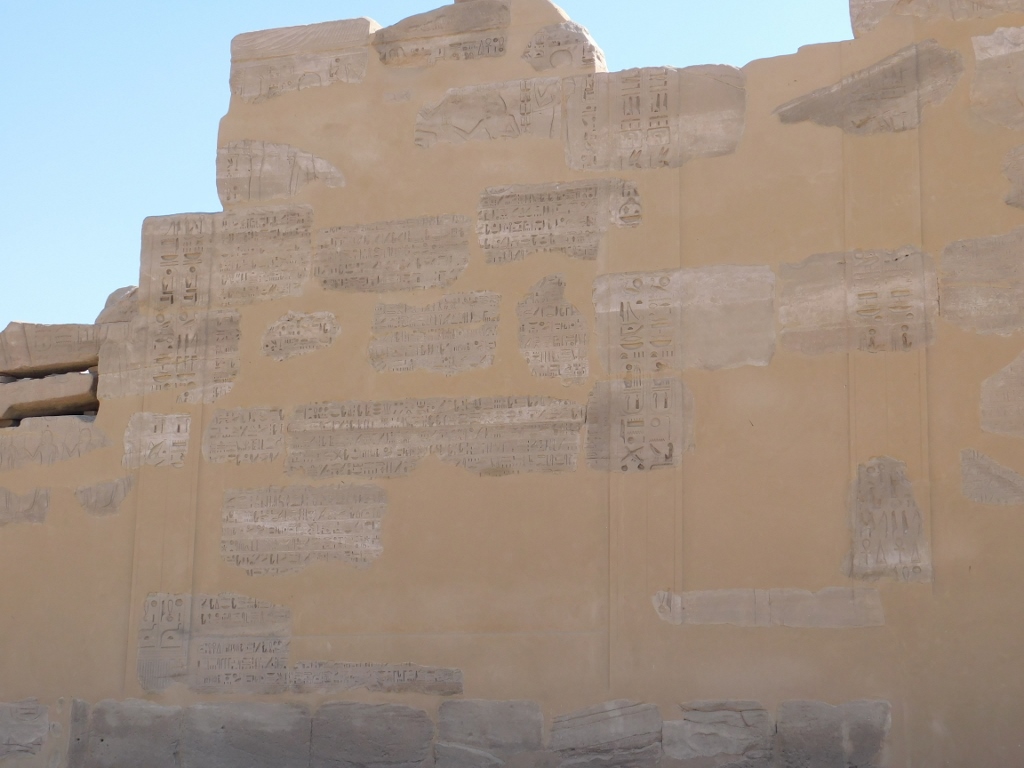 Restored wall at the Temple of Amun in Karnak
Restored wall at the Temple of Amun in Karnak
Then I went searching for a special place. This was a small room, more or less to the left from the Inner Sanctum, which had nicely decorated walls showing a very interesting detail. The structure is sometimes called the Sanctuary of Hatshepsut.
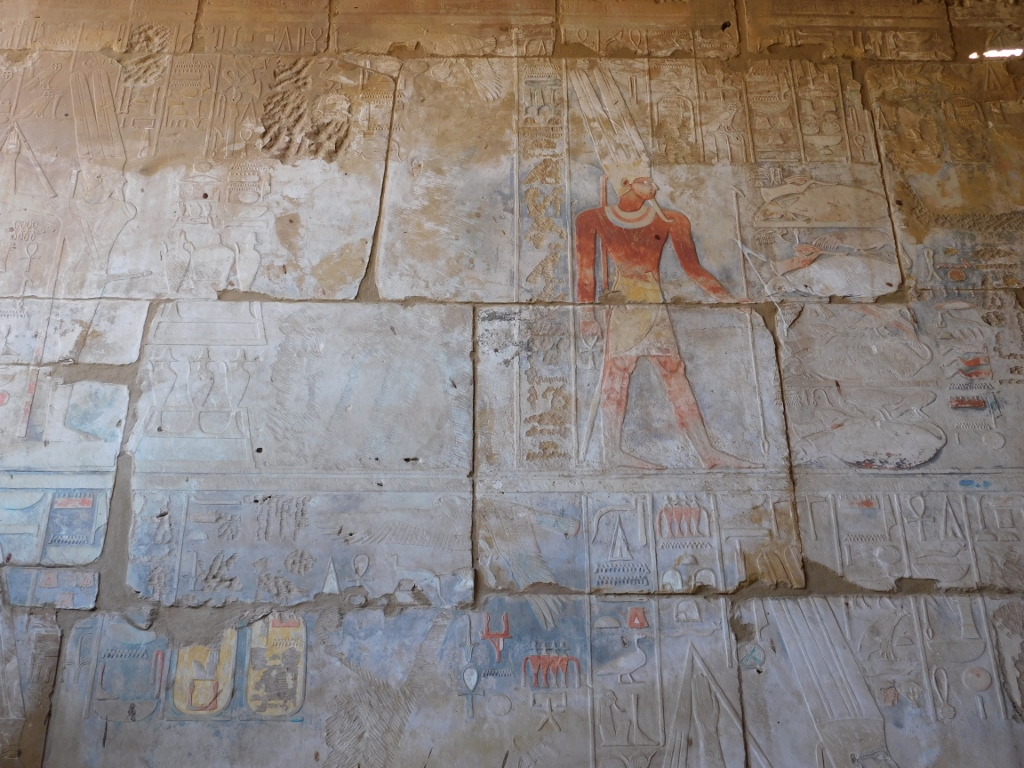 Wall decoration at the Sanctuary of Hatshepsut
Wall decoration at the Sanctuary of Hatshepsut
The main reason why I wanted to get here was that I had already been here back in 2001 and it was then that I heard the story about one of the wall paintings. Here it is...
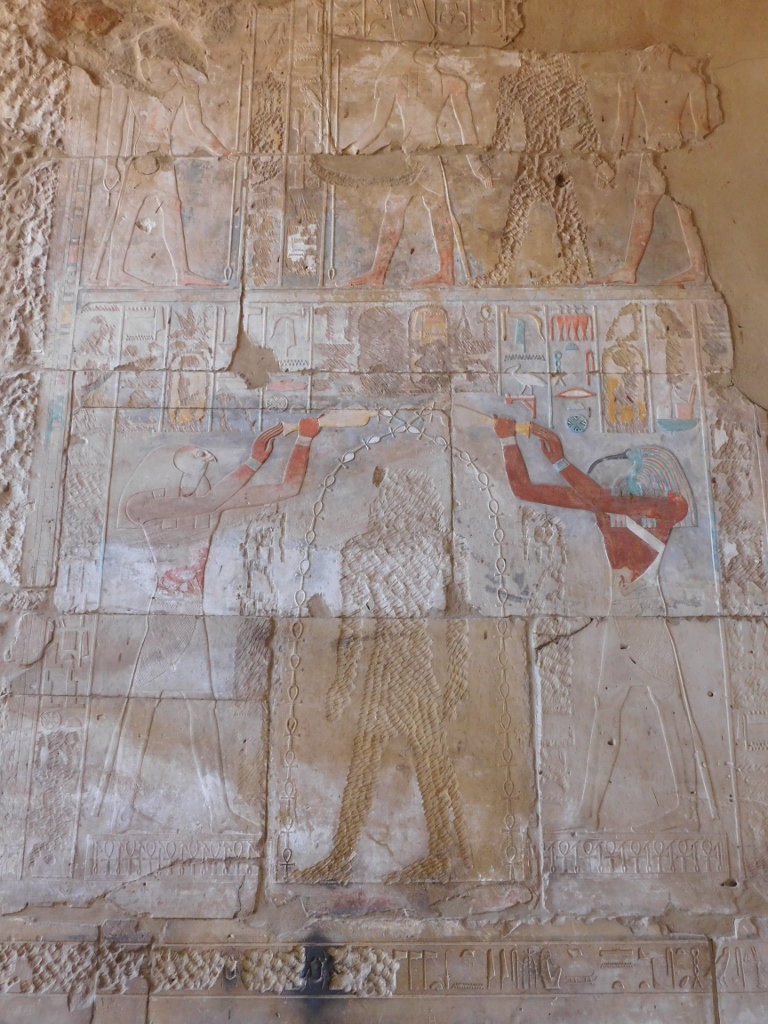 Wall decoration at the Sanctuary of Hatshepsut
Wall decoration at the Sanctuary of Hatshepsut
I have already mentioned and shown within my stories about the trip to Egypt (https://www.svudapodji.com/en/egypt-5/) a wall relief were one can see gods Thoth and Horus pouring the water of life over a pharaoh, which is a relatively frequent motif. Here, too, that same motif can be seen with a note that the water of life is depicted as a sequence of ankhs (a type of a cross) which is used as a hieroglyph meaning “eternal life.” One should keep in mind that the colours here are 3500 years old!!!
However, what is specific here is that the image of the pharaoh was completely destroyed or, rather, removed using a tack hammer. This again concerns Pharaoh Hatshepsut. Earlier, the scholars believed that her heir, Thutmose III, was seriously cross with her and then he tried to remove her image and the cartouche with her name wherever he could. There are, however, other theories now in connection with this. Be as it may, there is no image of Pharaoh Hatshepsut here.
Here is a photo of the same scene from 2001, as well as a video of the Sanctuary of Hatshepsut in order to provide better illustration of the place.
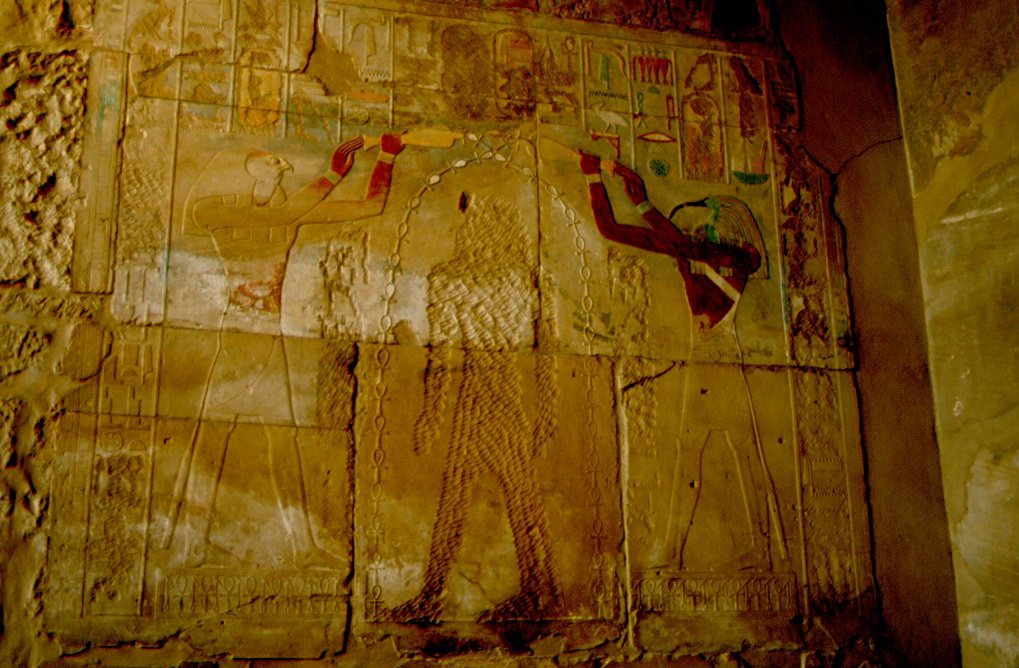 Poor Hatshepsut – even the ankhs could not help her (2001 photo)
Poor Hatshepsut – even the ankhs could not help her (2001 photo)
Since I’m already using my digitalised slides from 2001, here is another one that shows an intermediate phase in the restoration of structures within the Karnak Temple Complex. Note the way the stone blocks in the photo below were arranged. Their toppling is prevented only by the fact that the middle blocks in the last row on the top rest one against the other and that they are fixed by a metal slab over the top.
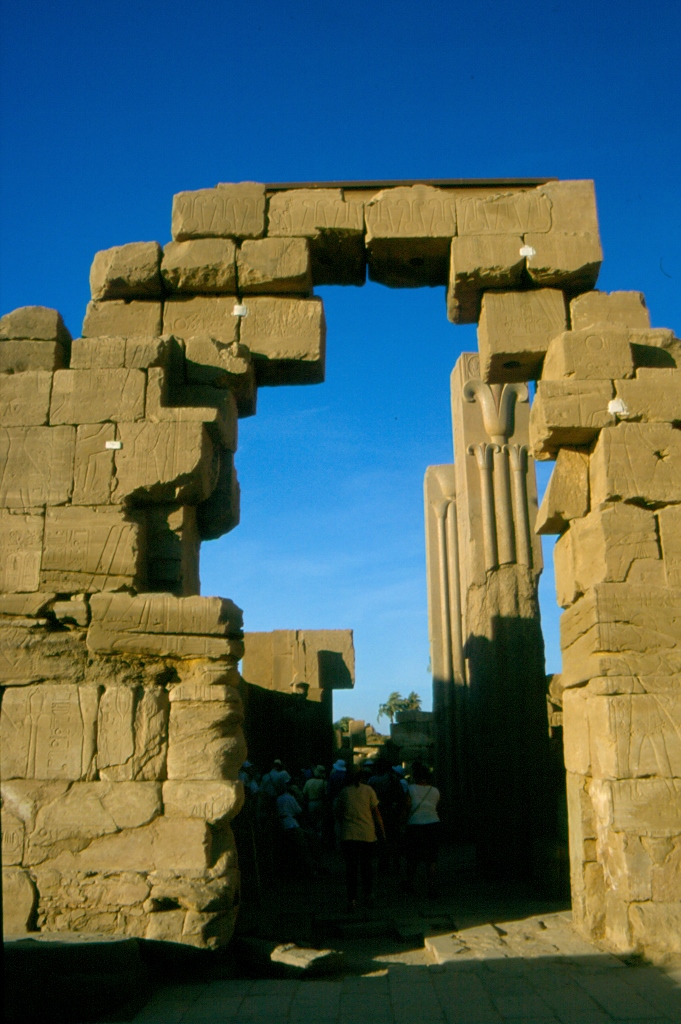 One of the gates within the temple complex (2001 photo)
One of the gates within the temple complex (2001 photo)
Today, there is a duly restored gateway here. It is located near two granite pillars that mark the entrance into the Inner Sanctum. The pillars contain reliefs of papyrus, a symbol of Lower Egypt (in the photo below), and lotus, a symbol of Upper Egypt (may be discerned in the photo above).
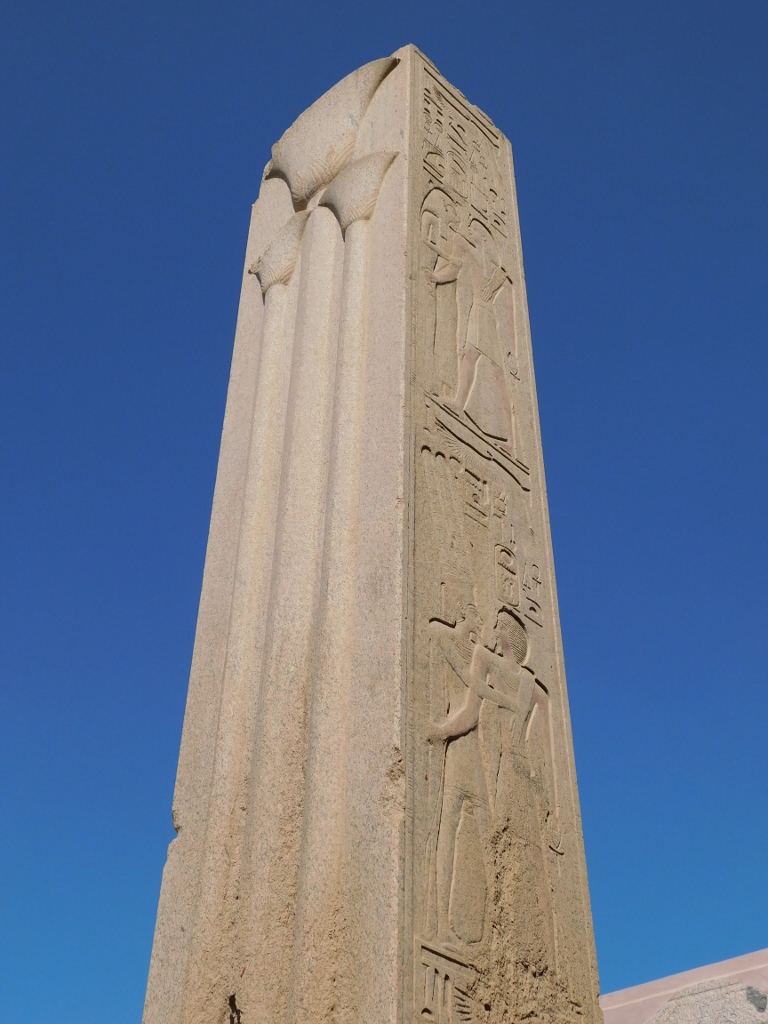 One of the two smaller pillars at the entrance into the Inner Sanctum
One of the two smaller pillars at the entrance into the Inner Sanctum
On the side of the pillar facing the Inner Sanctum, it is possible to see two figures – the pharaoh and his wife. What is striking is that the pharaoh has dark colour of the skin, while the wife’s skin colour is light. It is believed that the reason for this was that men used to go out a lot, they exercised, waged wars, etc., while the women were “at home” all the time.
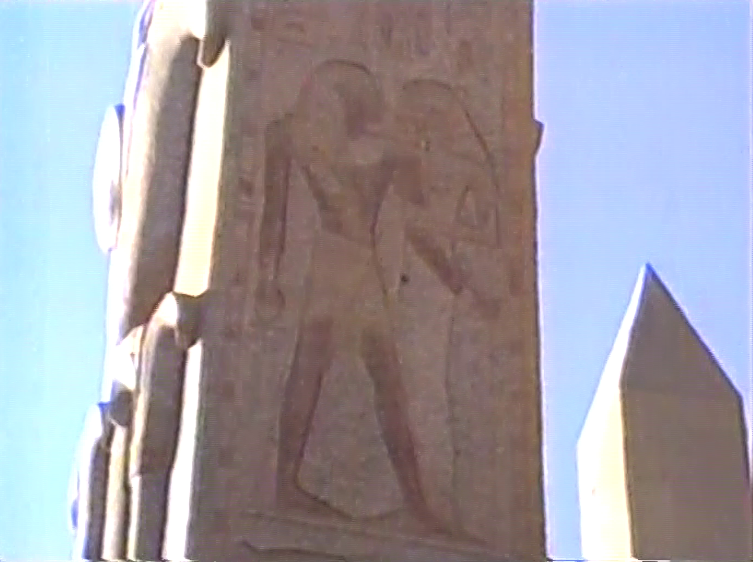 Pharaoh and his wife in two colours (2001 photo)
Pharaoh and his wife in two colours (2001 photo)
The Inner Sanctum consists of two rooms. The sanctum was built on the spot where earlier there had been a sanctuary of Thutmose III. The sanctum we can see today was built during Philip III Arrhidaeus who ruled Macedonia after the death of Alexander the Great.
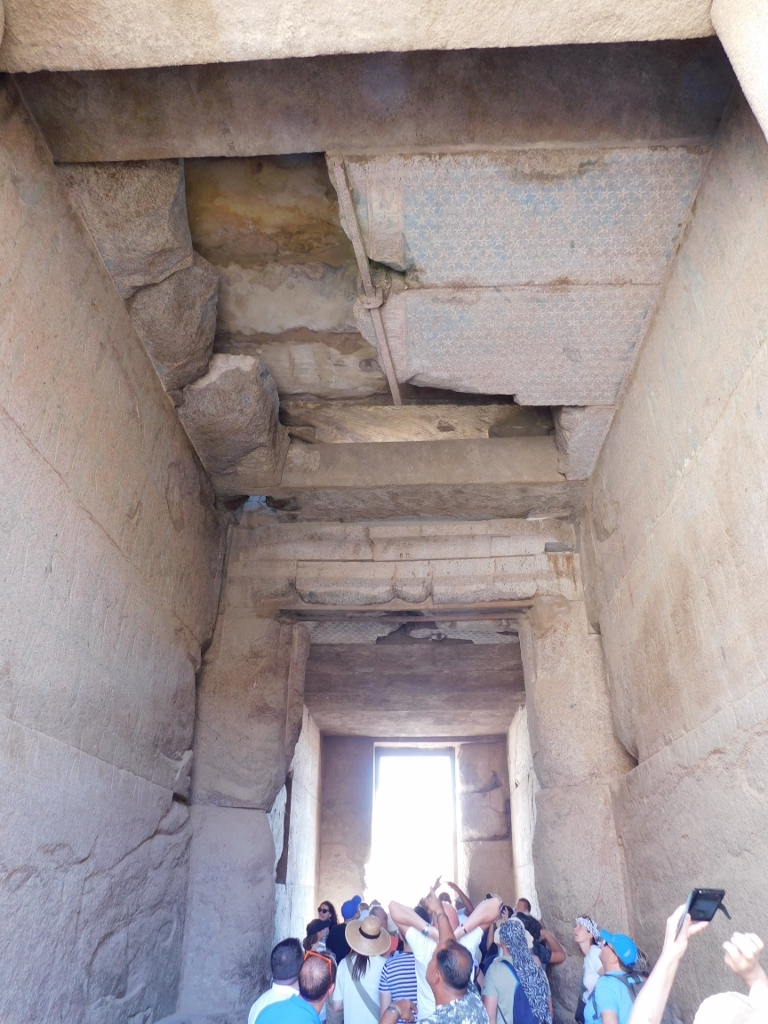 First room of the Inner Sanctum
First room of the Inner Sanctum
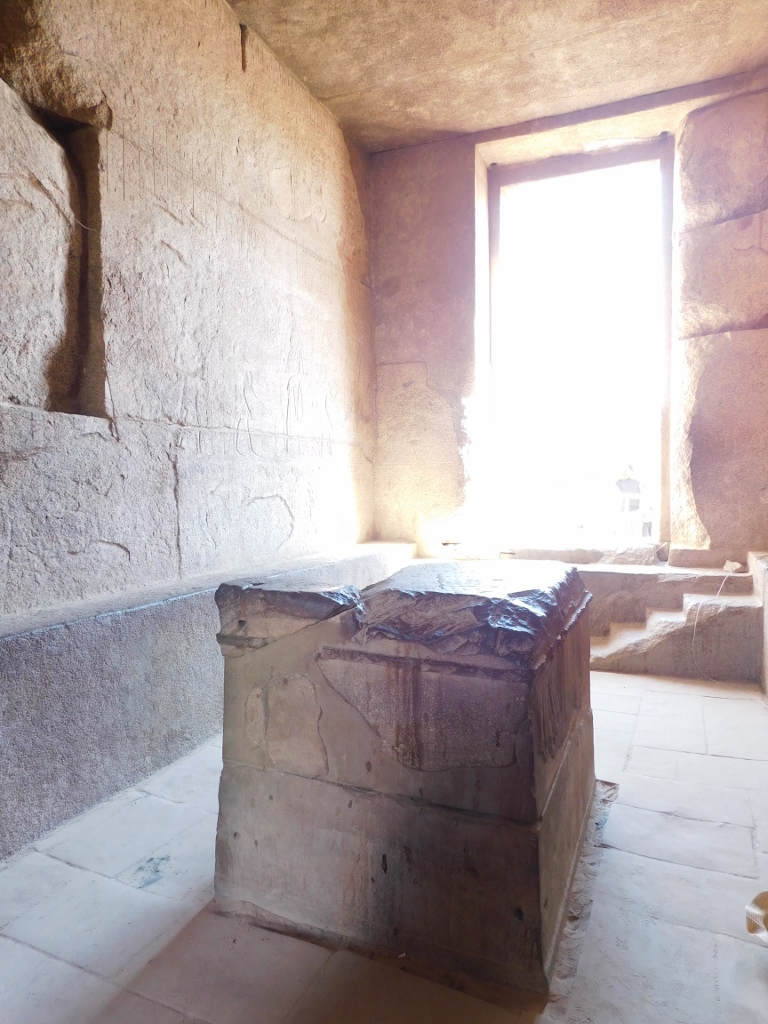 Second room of the Inner Sanctum – what a treat that I was almost alone here
Second room of the Inner Sanctum – what a treat that I was almost alone here
In Ancient Egypt, only two persons were allowed in the Inner Sanctum: the pharaoh and the high priest. Nowadays the customs are different.
After this I had to go back to the exit, since there was an agreement that the group should meet up again by the coach in order to continue with the visit to Luxor. Again I went through the Hypostyle Hall and again I was impressed with it. Here are a few more photos, as well as a short video.
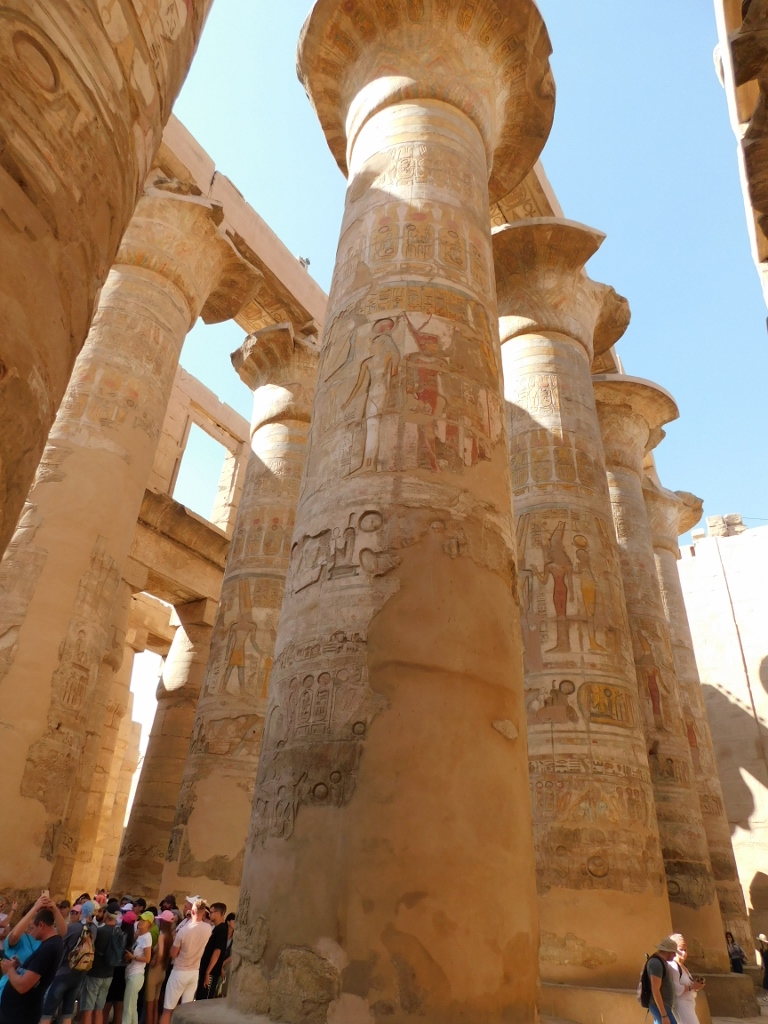 Hypostyle Hall at Karnak
Hypostyle Hall at Karnak
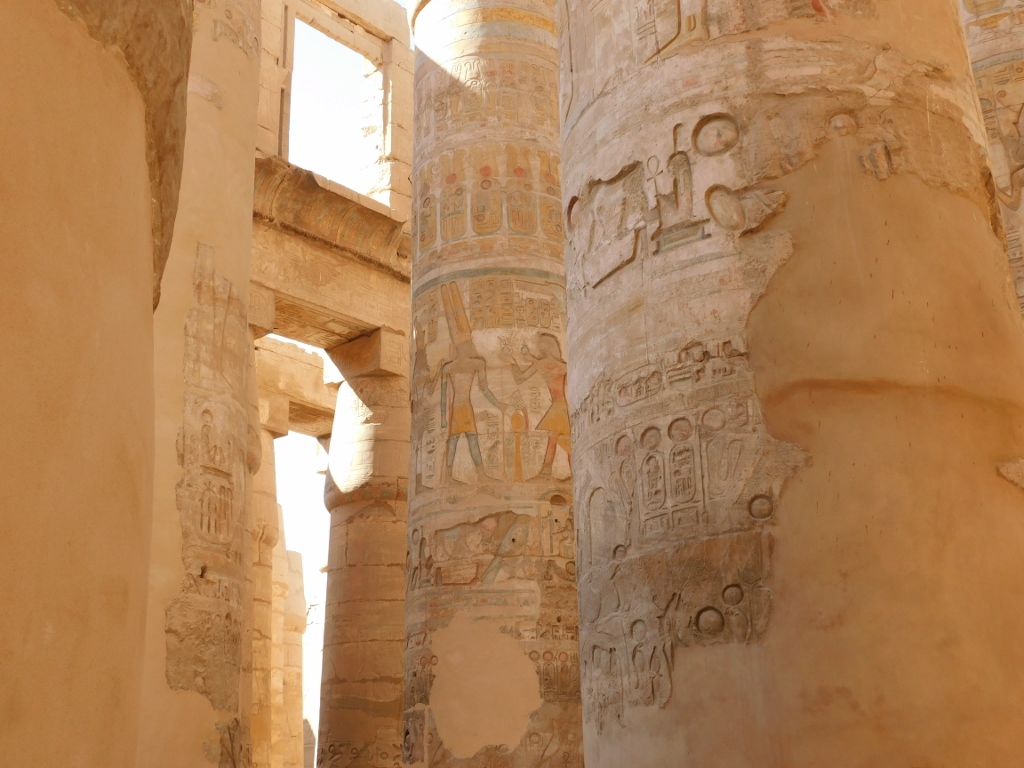 Hypostyle Hall at Karnak
Hypostyle Hall at Karnak
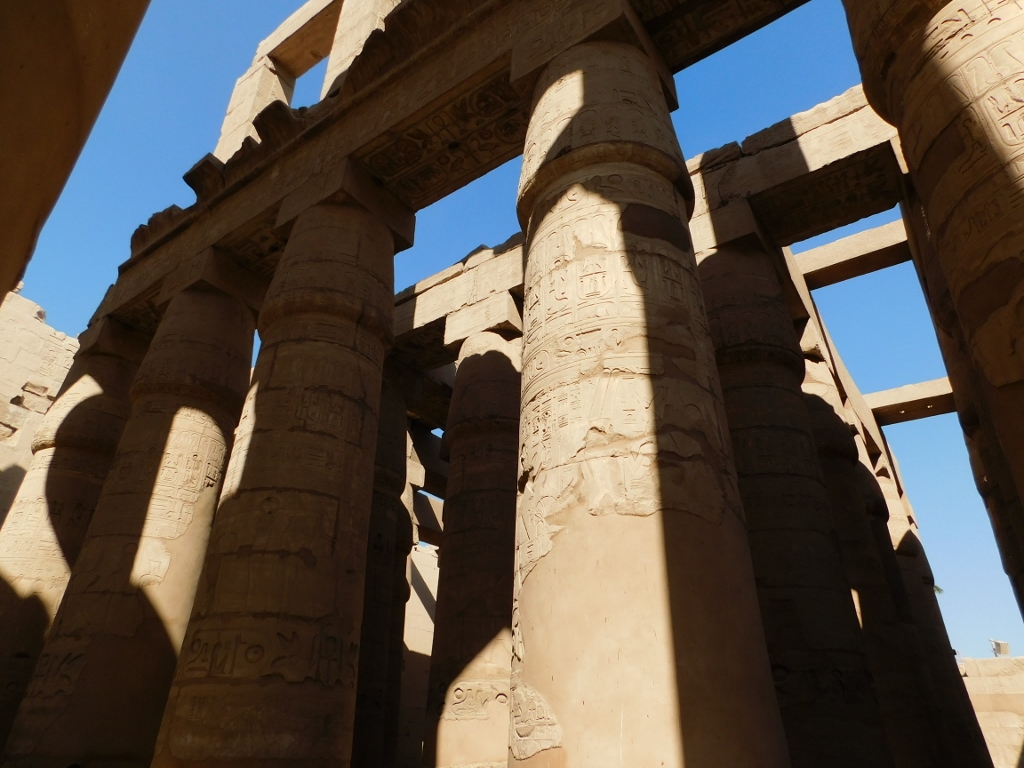 Hypostyle Hall at Karnak
Hypostyle Hall at Karnak
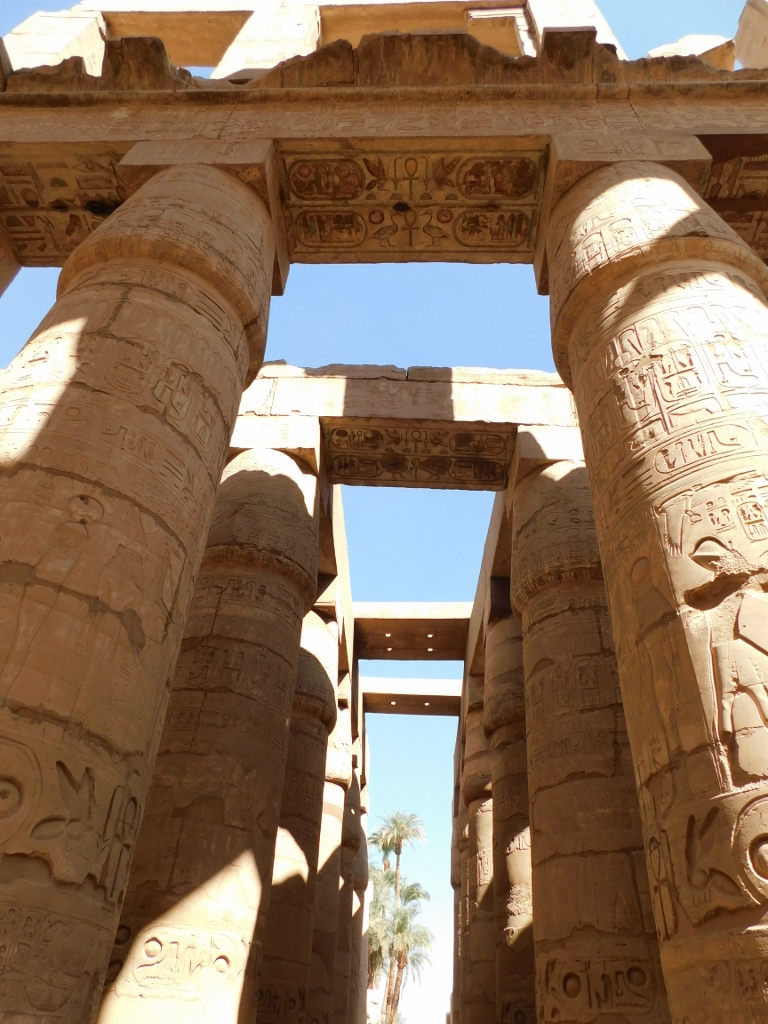 Hypostyle Hall at Karnak
Hypostyle Hall at Karnak
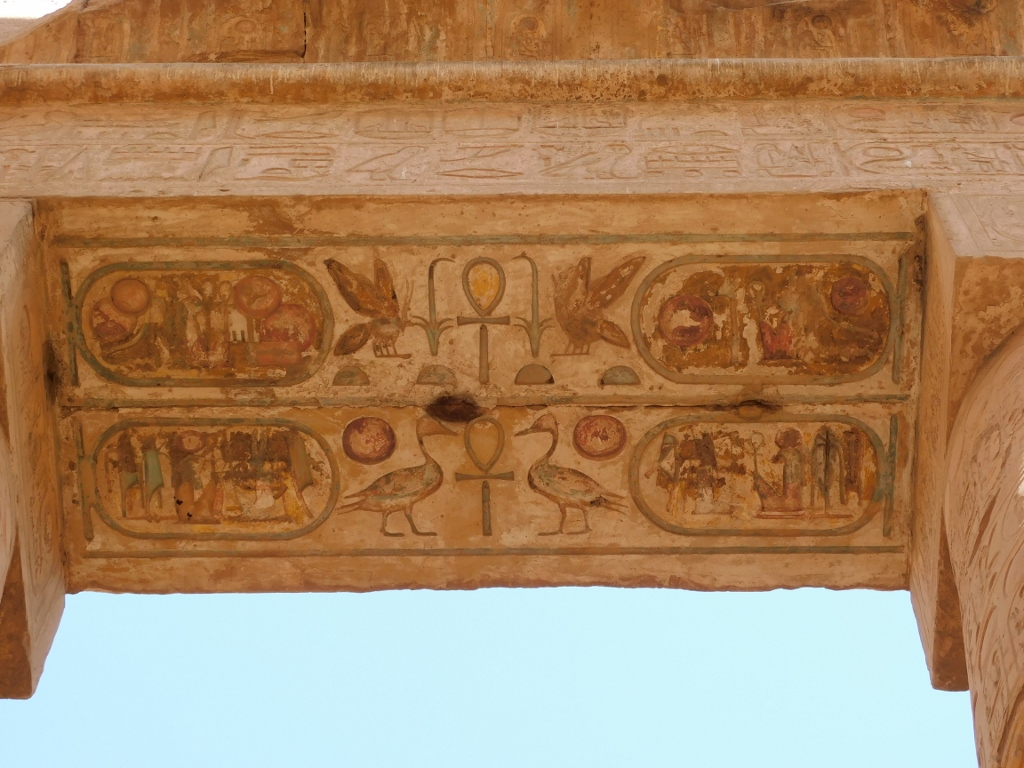 Hypostyle Hall at Karnak
Hypostyle Hall at Karnak
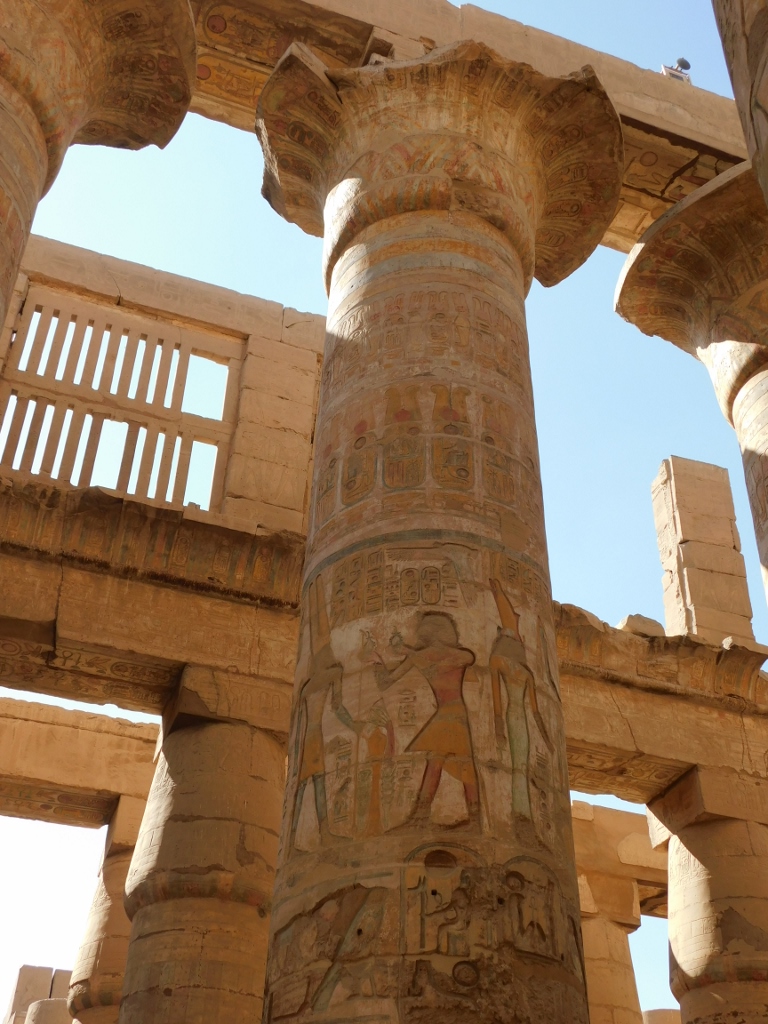 Hypostyle Hall at Karnak
Hypostyle Hall at Karnak
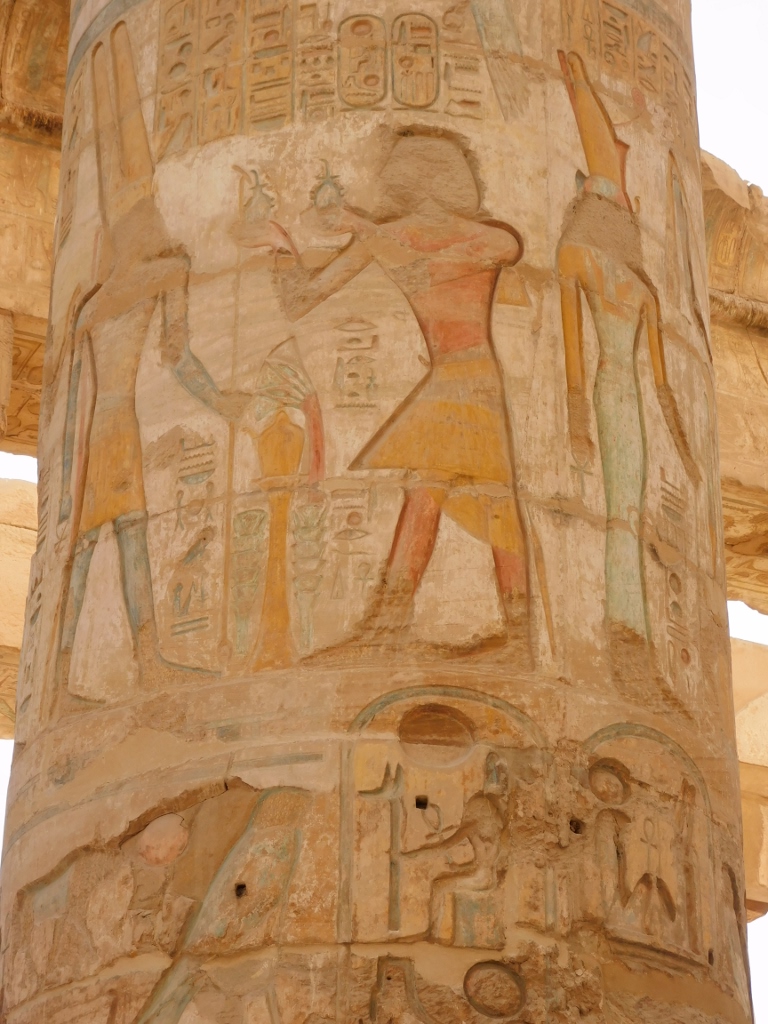 Hypostyle Hall at Karnak
Hypostyle Hall at Karnak
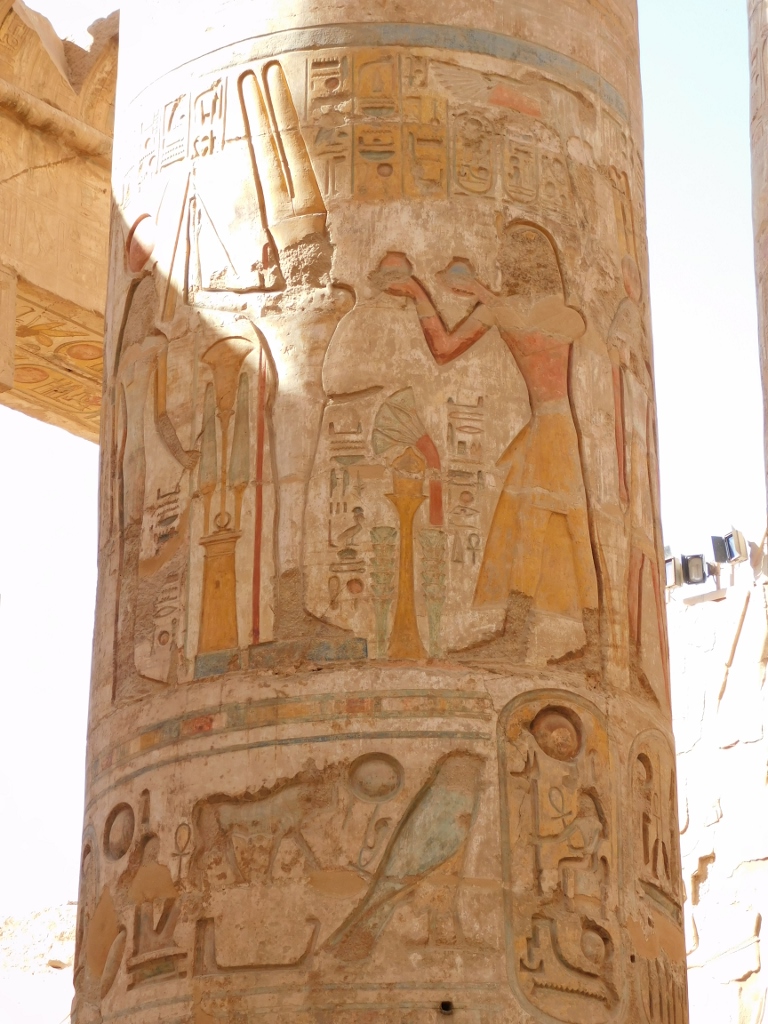 Hypostyle Hall at Karnak
Hypostyle Hall at Karnak
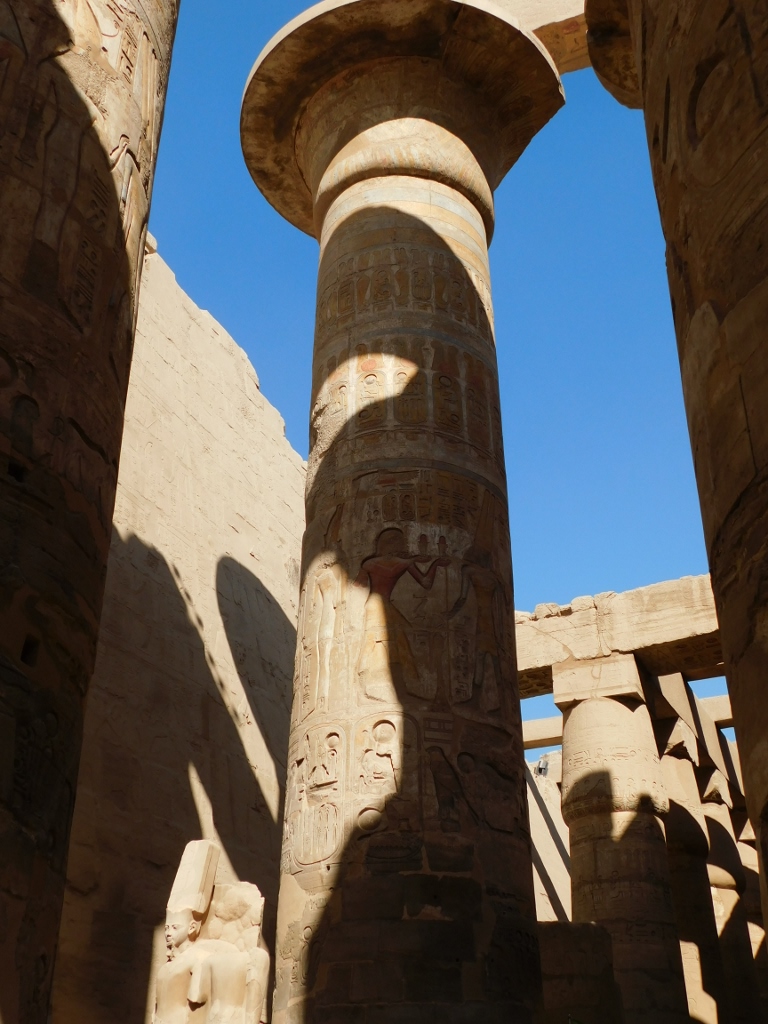 Hypostyle Hall at Karnak
Hypostyle Hall at Karnak
And yet, I did not finish with my sightseeing here, because there was still something I wanted to see in Karnak. This was a smaller temple I did not visit in 2001, but it is said to be one of the structures here that is in the best state of preservation. It is located at the north corner of the Temple of Amun, in the part called the Open Air Museum. This is the White Chapel of Senusret I, from the 12th dynasty, who ruled in the period from 1971–1926 BCE.
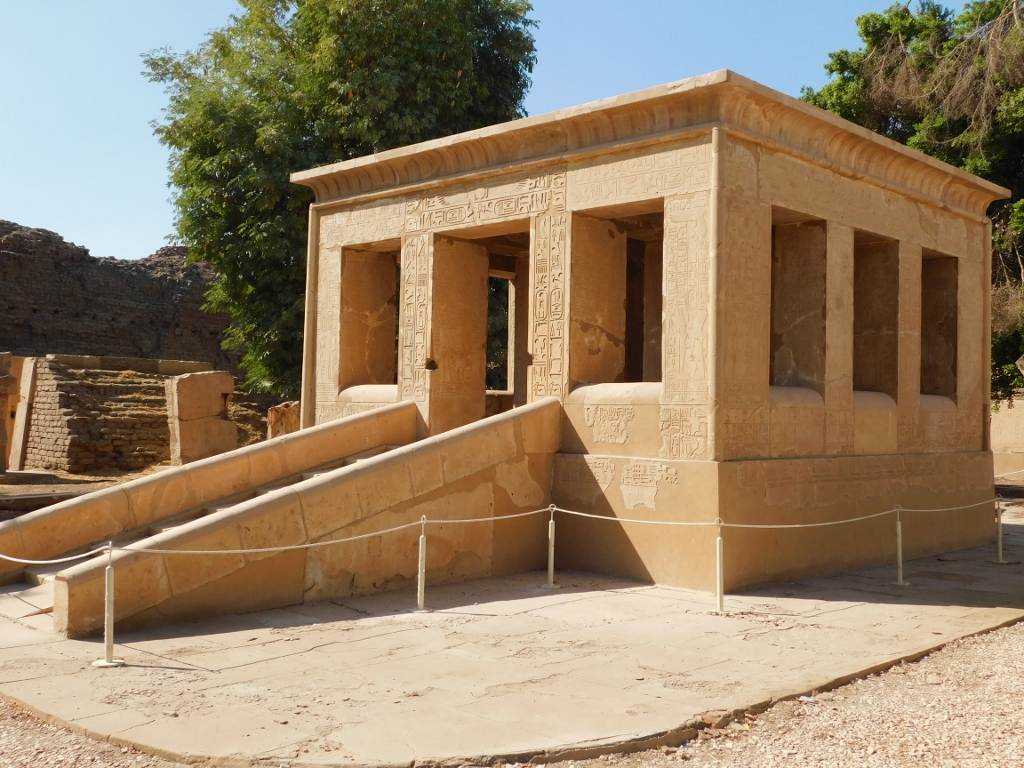 White Chapel of Senusret I
White Chapel of Senusret I
The temple built during the Middle Kingdom was in fact destroyed some 600 years later, during the New Kingdom and the reign of Pharaoh Amenhotep III, in order for some of its parts to be used as the filler during the construction of the Third Pylon. At the beginning of the 20th century, these parts were located and the temple was reassembled again. It is known for its pillars that have high quality reliefs. I must emphasise here that the guard himself proposed to let me go inside the temple. Of course, after such “kindness,” a tip is expected.
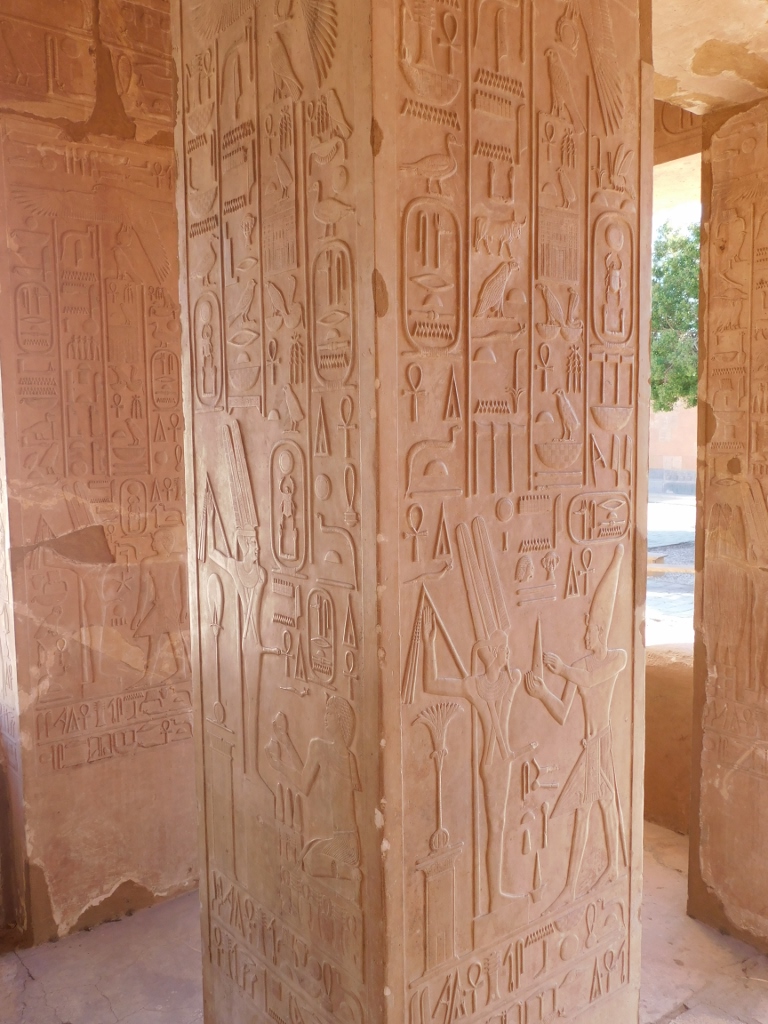 Relief on one of the pillars in the White Chapel of Senusret I
Relief on one of the pillars in the White Chapel of Senusret I
And here I finally completed my visit to the Karnak Temple Complex, so I rushed in order to meet the group at the parking lot. Still, here is another photo from 2001 taken in front of the entrance into the Temple of Amun.
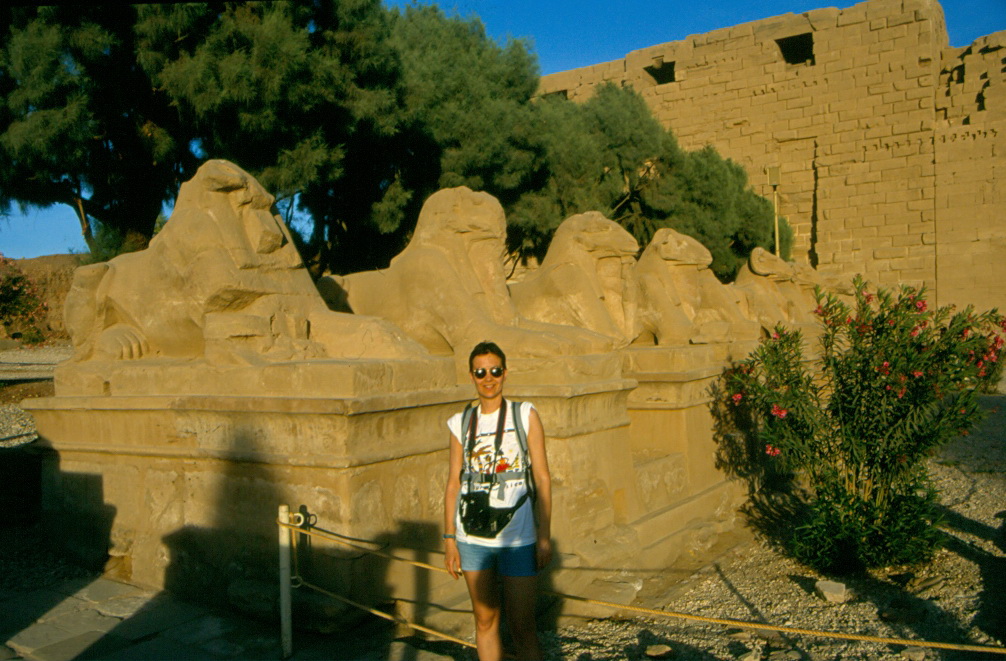 Beside the Corridor of Sphinxes in 2001
Beside the Corridor of Sphinxes in 2001
When the group gathered again, we were taken to a place where they sell papyruses. This is quite a common part of the tourist offer and what is good is that it does not take too long, while at the same time the visitors have an opportunity to buy at one single venue whatever they may be interested in as far as this type of souvenir is concerned. To start with, in order to get the visitors in the mood, they are shown how a type of paper called papyrus is made out of a plant – papyrus (Cyperus papyrus).
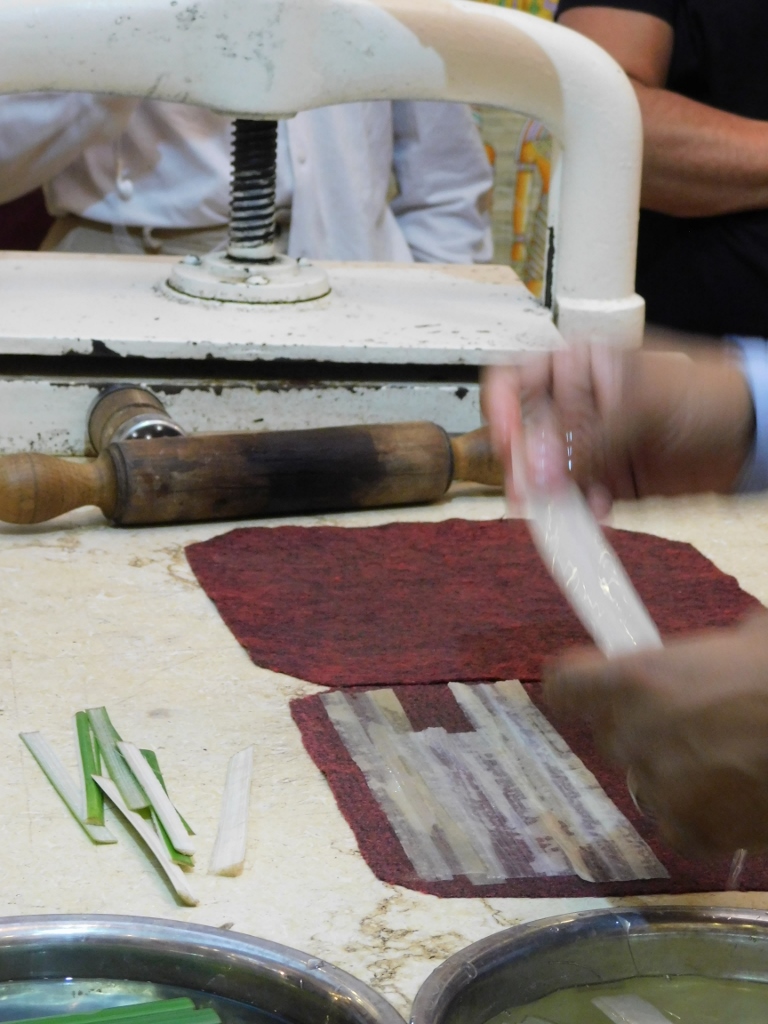 A part of the process of making papyrus (paper)
A part of the process of making papyrus (paper)
Afterwards we were taken to the riverbank of the Nile where we embarked a larger boat that took us along the river for a short while and then transferred us to the other bank since we had a lunch at a tourist restaurant there.
The boat ride was nice, but no more or less than that. However, it also gave me an opportunity to see the Luxor Temple again which I did not visit in 2021. I have already written about it in part 6 of my Egypt travelogue (https://www.svudapodji.com/en/egypt-6/).
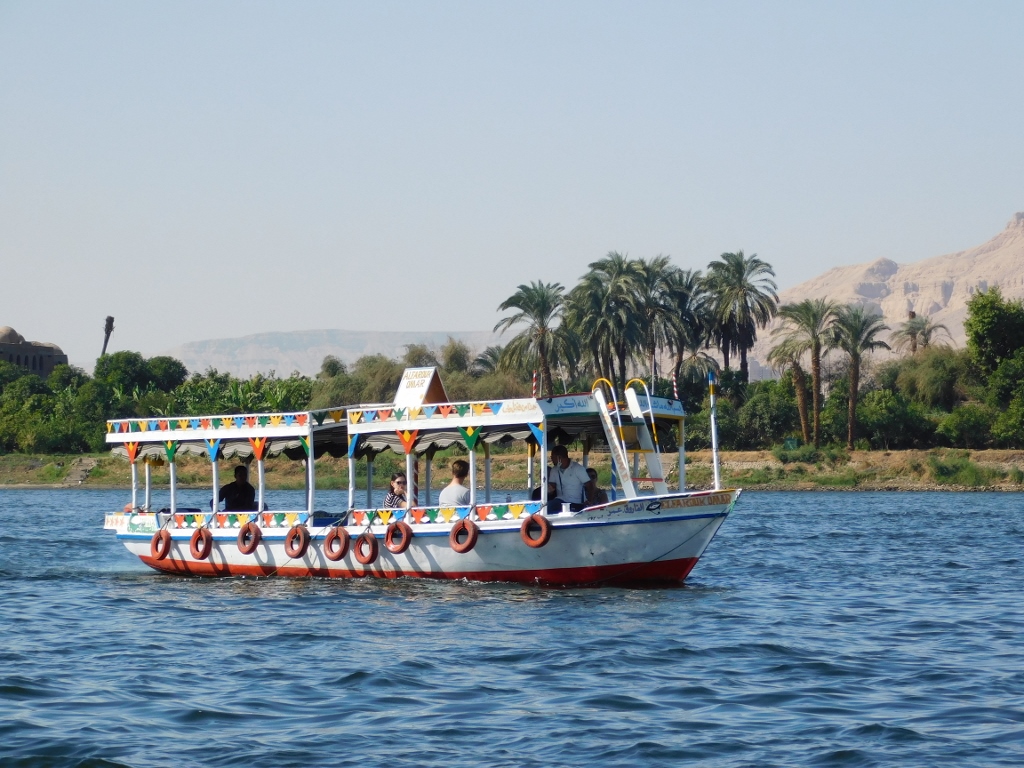 A typical tourist boat for short rides along the Nile
A typical tourist boat for short rides along the Nile
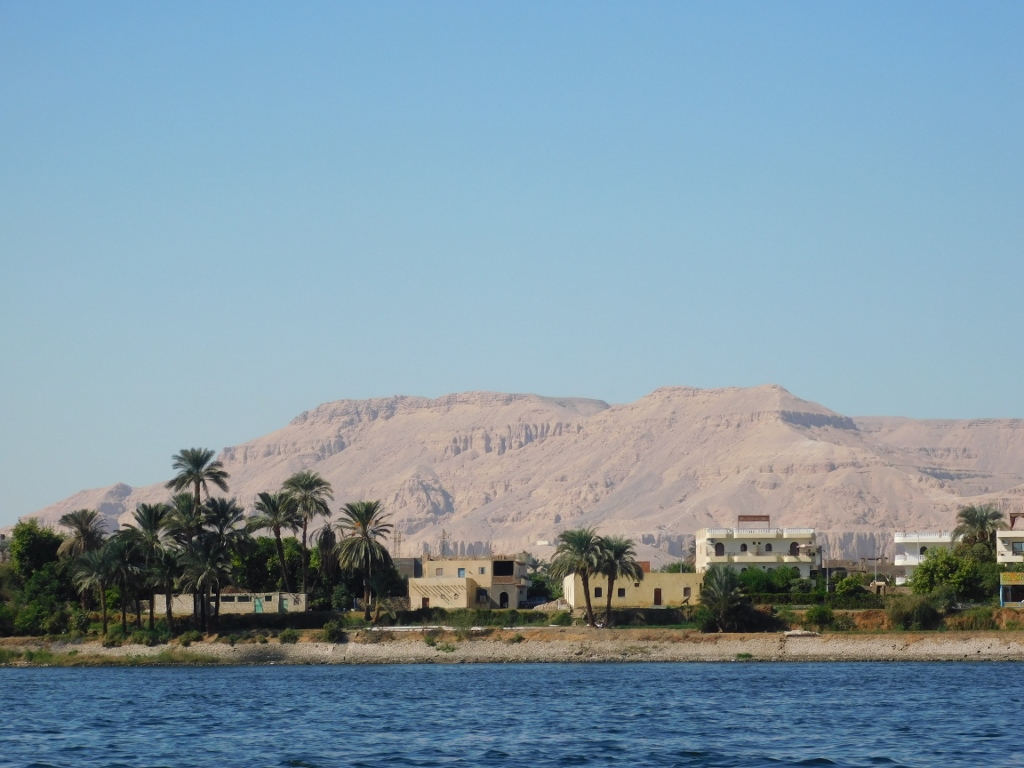 West bank of the Nile in Luxor
West bank of the Nile in Luxor
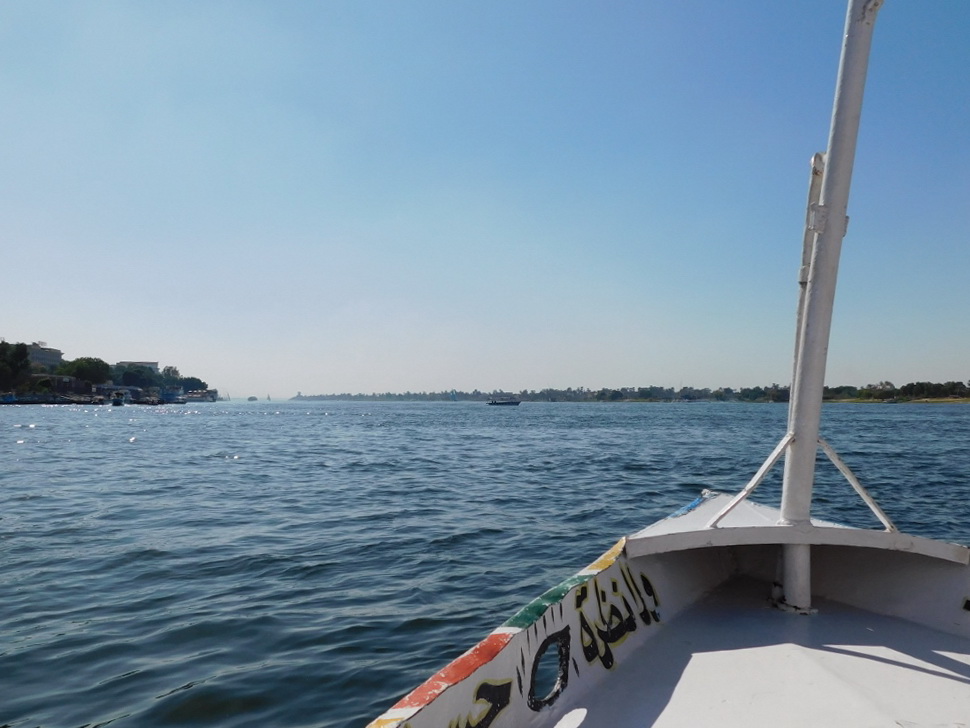 Going up the Nile
Going up the Nile
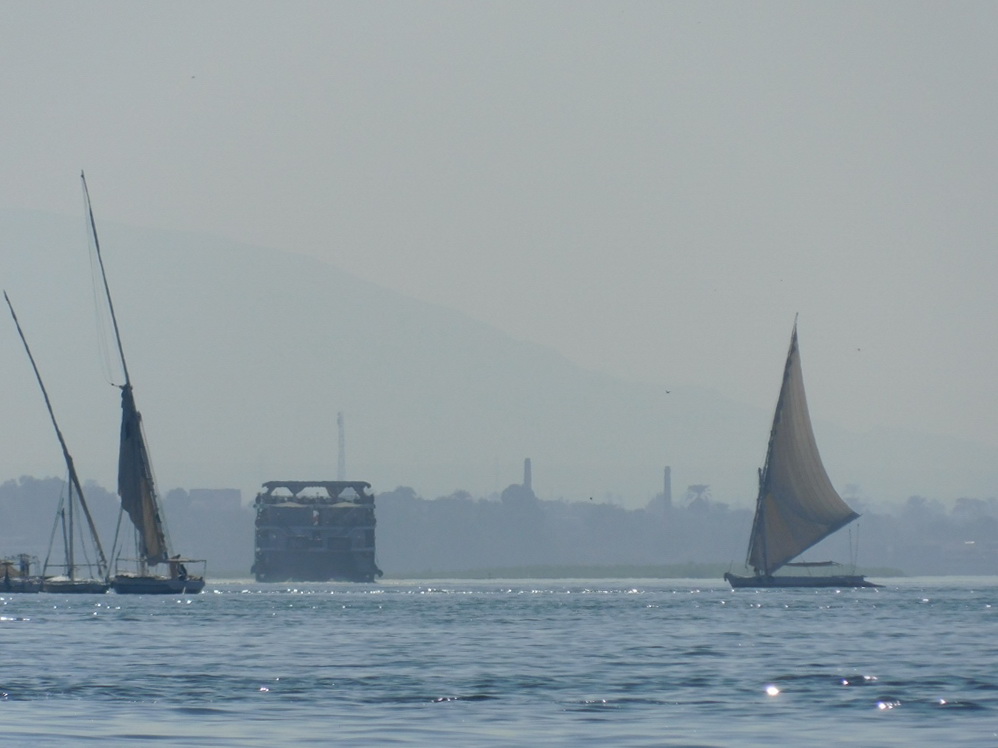 Different vessels on the Nile
Different vessels on the Nile
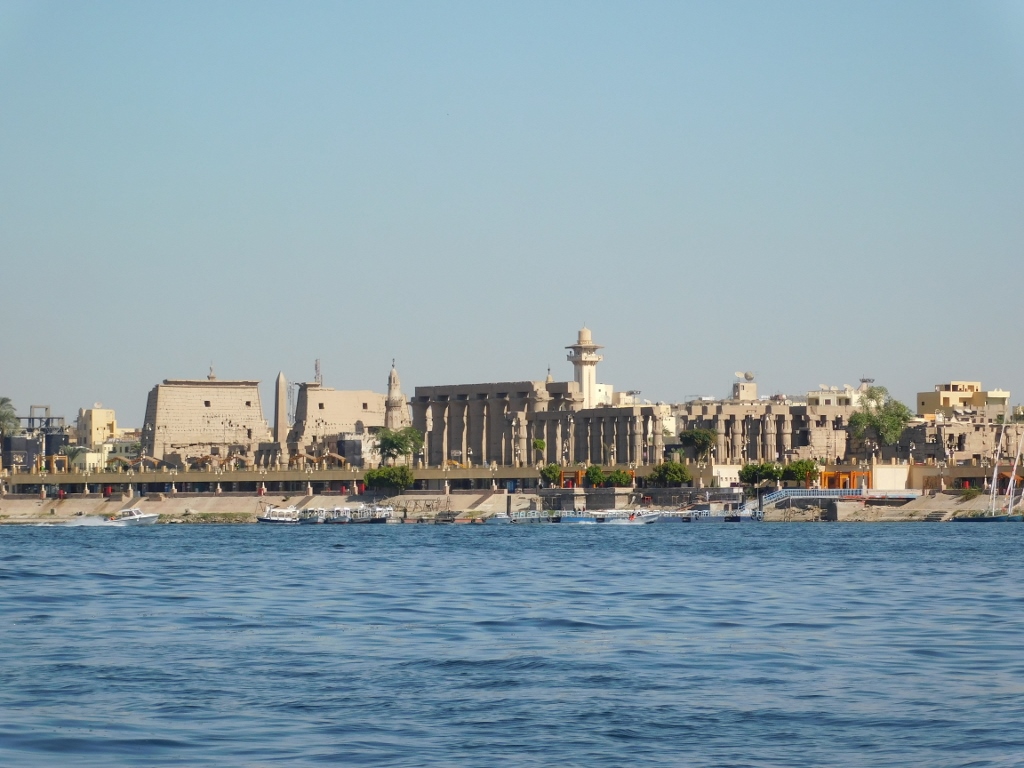 Luxor Temple on the east bank of the Nile
Luxor Temple on the east bank of the Nile
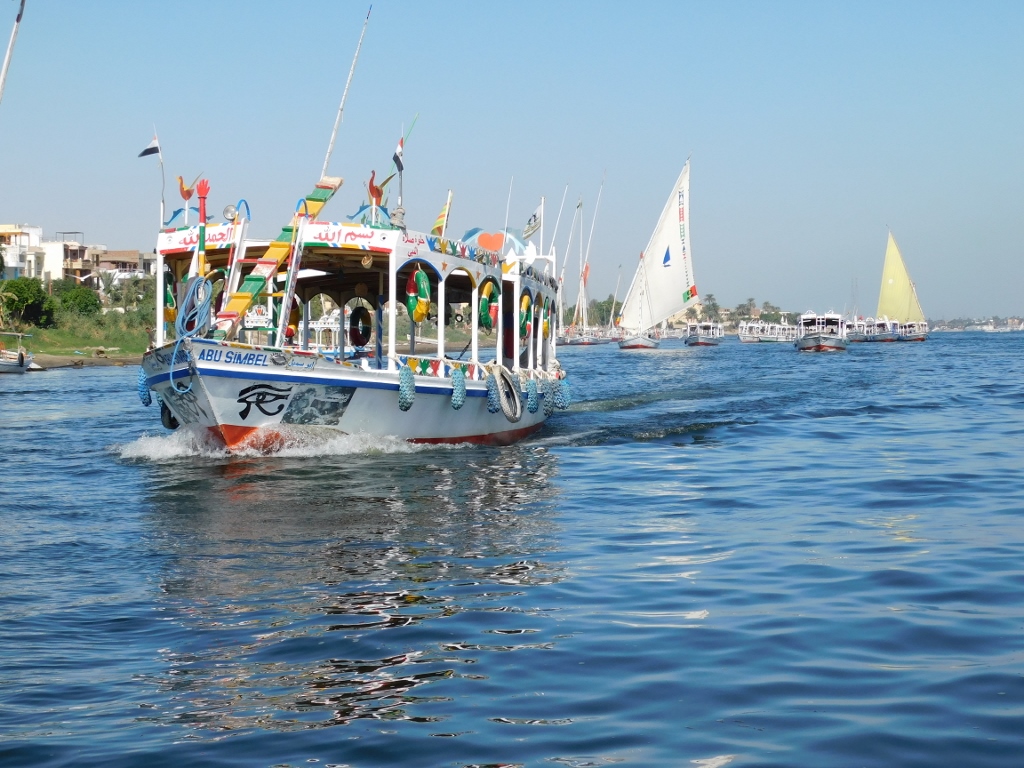 Getting close to the disembarkment point
Getting close to the disembarkment point
This is what it looks like in the form of a video:
As I’ve already suggested, after the boat ride we walked to a nearby restaurant and had a lunch there, after which we got back into our mini-bus and headed for the planned visit to the west bank of the Nile in Luxor.
This part is also referred to as Western Thebes. As a reminder, (Egyptian) Thebes was the capital of Ancient Egypt on several occasions and certainly also over a longer period of time. The pharaohs who ruled from here, as well as their families, numerous members of the nobility and priests, had to be appropriately buried somewhere. The west bank of the Nile, exactly across from Thebes (present-day Luxor) was perfect for the purpose. Not only was there a lot of space, including also rocky mountains, burying people on the west side of the city made a lot of sense. Namely, west is the side where the Sun sets and therefore the west side symbolically marks the realm of the dead.
Numerous temples were built here and there is also a large number of tombs, some of which are truly magnificent, for this is in fact one huge necropolis divided into several areas. Still, back in the day, there was at least one pharaoh’s palace built here, as well as several libraries and schools, on top of which there were villages inhabited by workers, craftsmen and artisans who served the necropolis, the temples and everything else linked to Western Thebes.
Needless to say, in order to see all of this one would require several days, but tourist groups usually have only a couple of hours at their disposal and then a few typical sites are visited. And so we headed for the Valley of the Kings, while passing by some interesting places along the way.
The first place was the Colossi of Memnon, but I will talk a little bit more about them later on, since we did make a stop here at the end of the excursion.
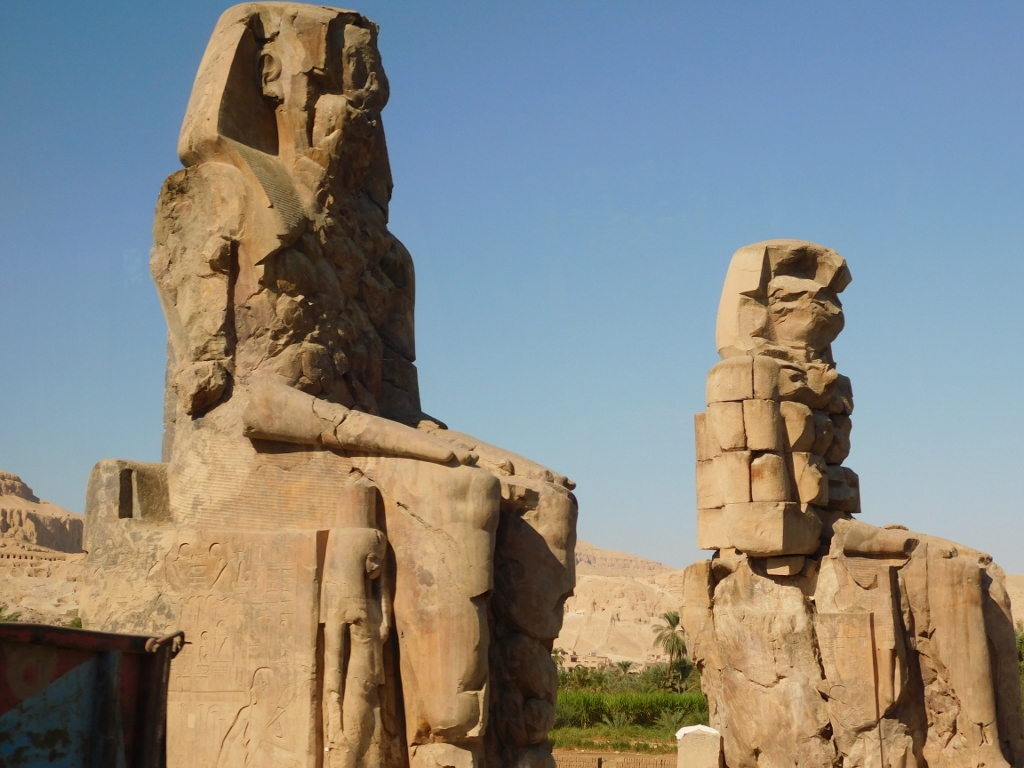 Colossi of Memnon as seen from the mini-bus
Colossi of Memnon as seen from the mini-bus
There are a few more sites along the road with remains of different mortuary temples, perhaps the most important one being Ramesseum, the mortuary temple of great Ramesses II that could be seen a little farther from the road.
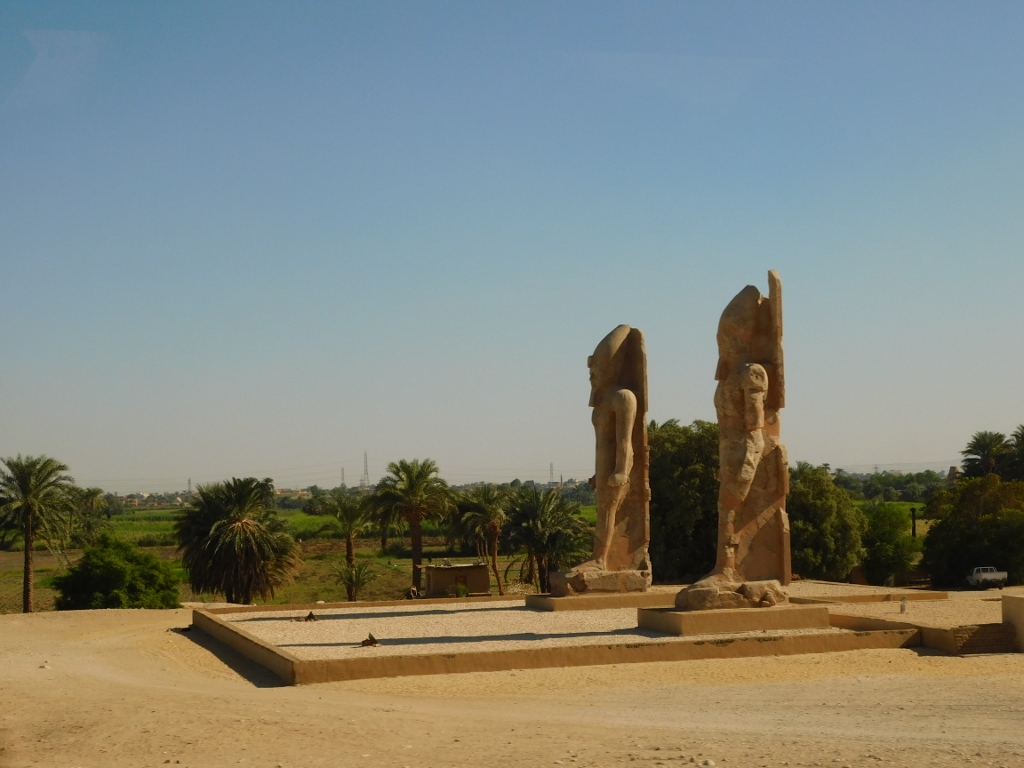 Colossi of the North Gate of the Temple of Amenhotep III
Colossi of the North Gate of the Temple of Amenhotep III
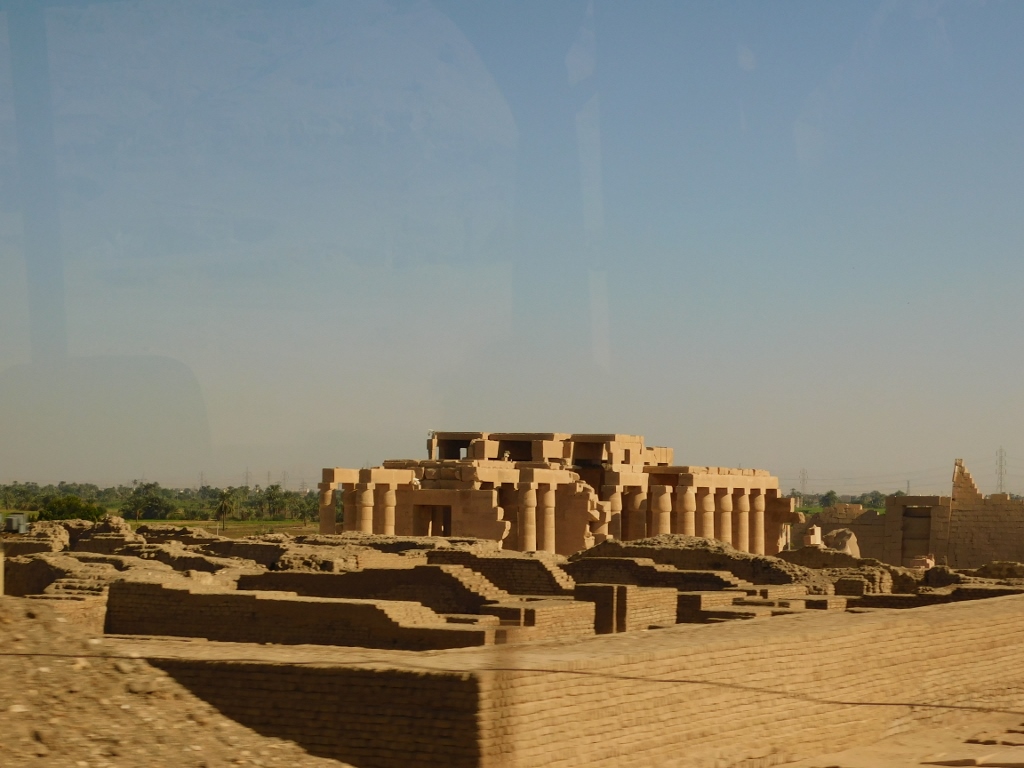 Ramesseum
Ramesseum
When you get to the Valley of the Kings, you first go through the Visitor Centre and then you are taken by a small electric train to the valley proper.
The Valley of the Kings was set up during the New Kingdom, i.e., during the reign of the pharaohs of the 18th, 19th and 20th dynasties. Over a period of 500 years (from the 16th to the 11th century BCE) pharaohs and powerful nobles were buried here.
To date, 63 tombs have been discovered, but most of them are not open to visitors. 18 tombs are earmarked for visits, but then again, not all of them are open at the same time. Most often, the visitors pay for a combined ticket that allows the visit to three tombs, but for some you have to pay separately if you want to see them. When I was here back in 2001 I did not visit the Tomb of Tutankhamun (for which one has to purchase a separate ticket), so this time I was determined to correct this.
When you get to the end of the road covered by the small electric train, the employees check your tickets and then you actually enter the space of the Valley of the Kings. This place was not chosen as the final resting place for the pharaohs’ mummified bodies. Just like Khufu and others built pyramids in order for this specific shape to help their soul rise up and go before the gods, there is in the Valley of the King one huge, natural “pyramid.” This is in fact the mountain that rises above this area and it has a proper pyramidal shape.
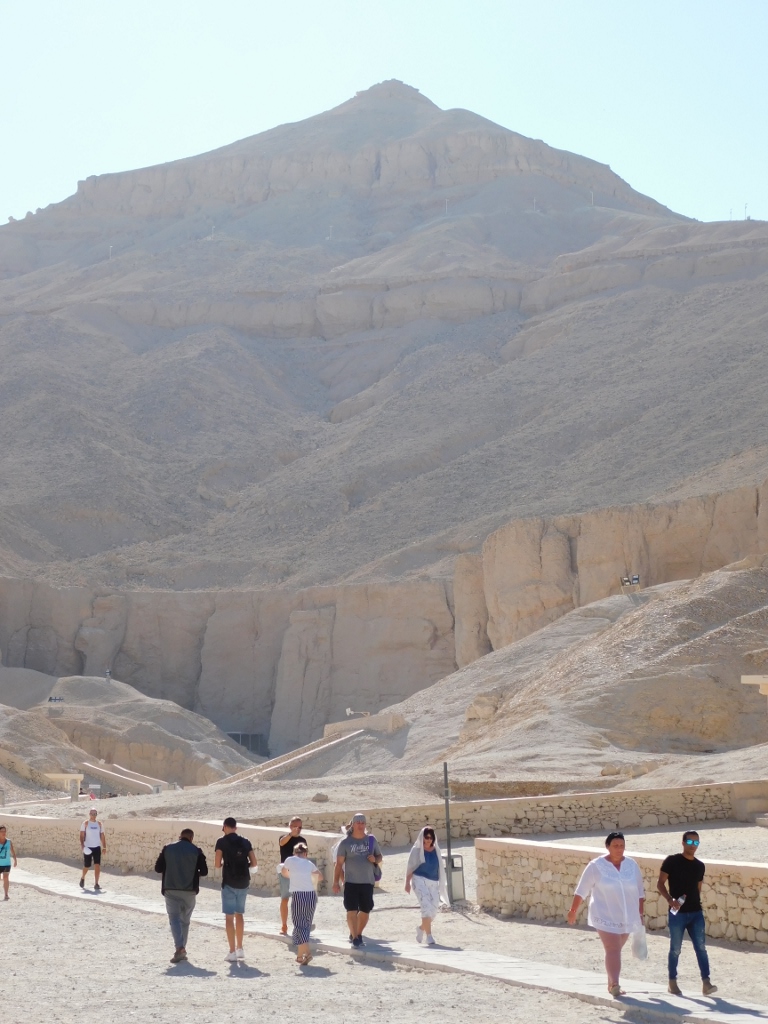 Natural “pyramid” above the Valley of the Kings
Natural “pyramid” above the Valley of the Kings
Today, there is a network of wide paths, while to the left and right there are built entrances into different tombs.
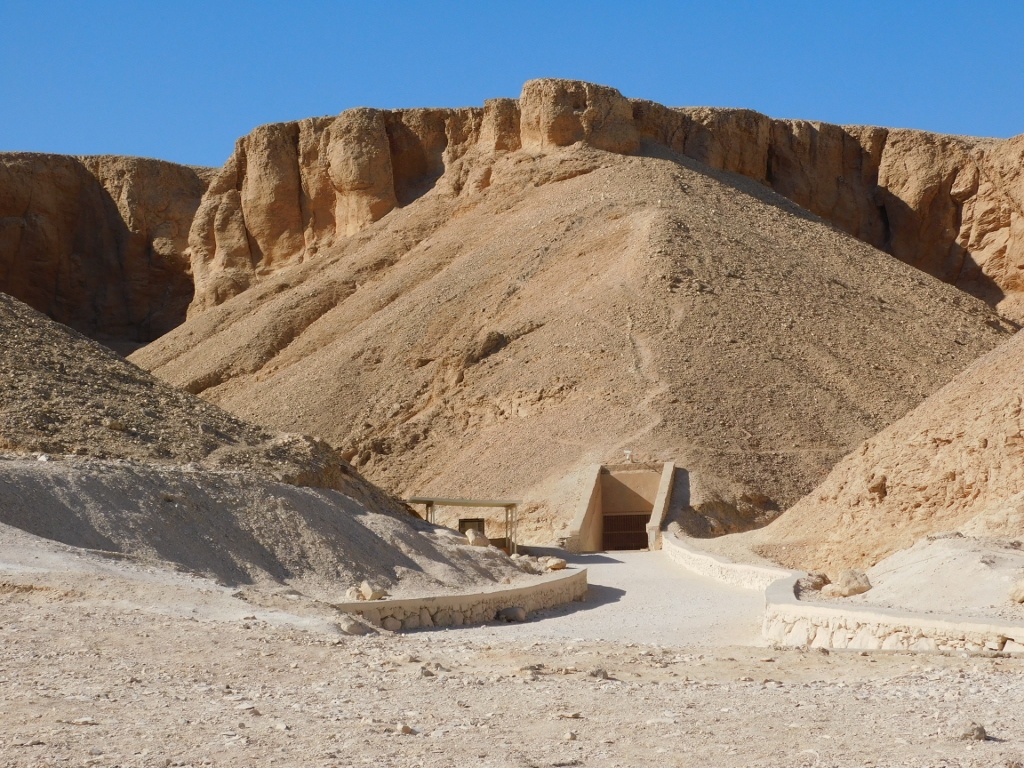 Valley of the Kings and entrances into tombs
Valley of the Kings and entrances into tombs
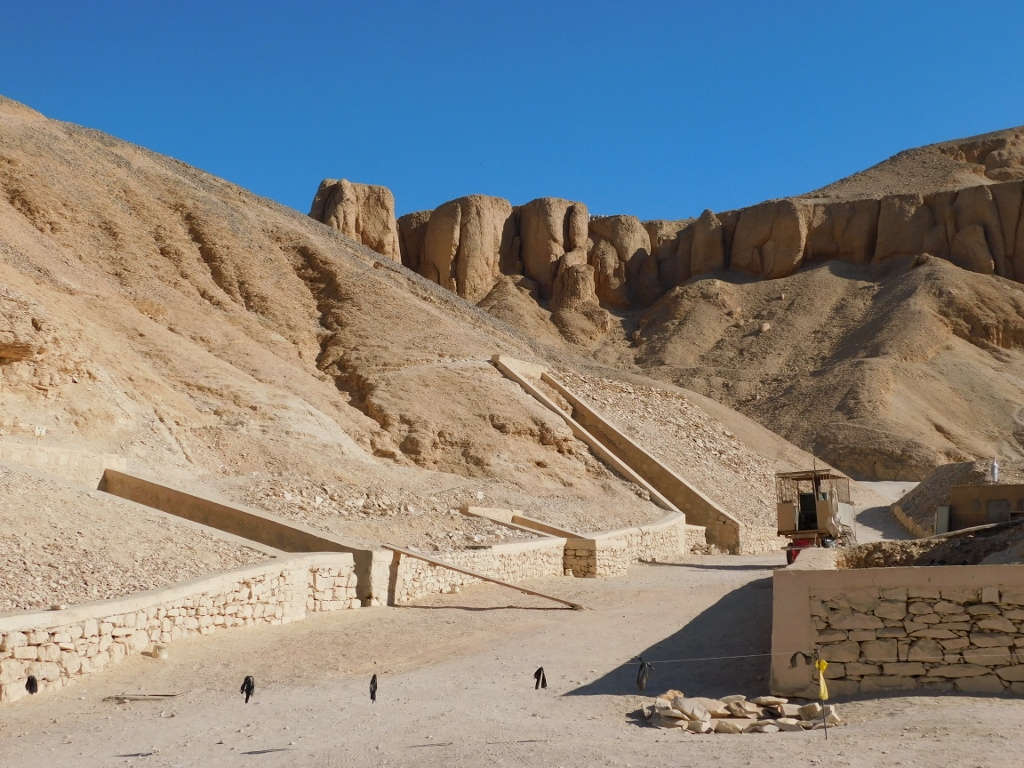 Valley of the Kings and entrances into tombs
Valley of the Kings and entrances into tombs
Somehow, in the very centre, there is the tomb of Pharaoh Tutankhamun.
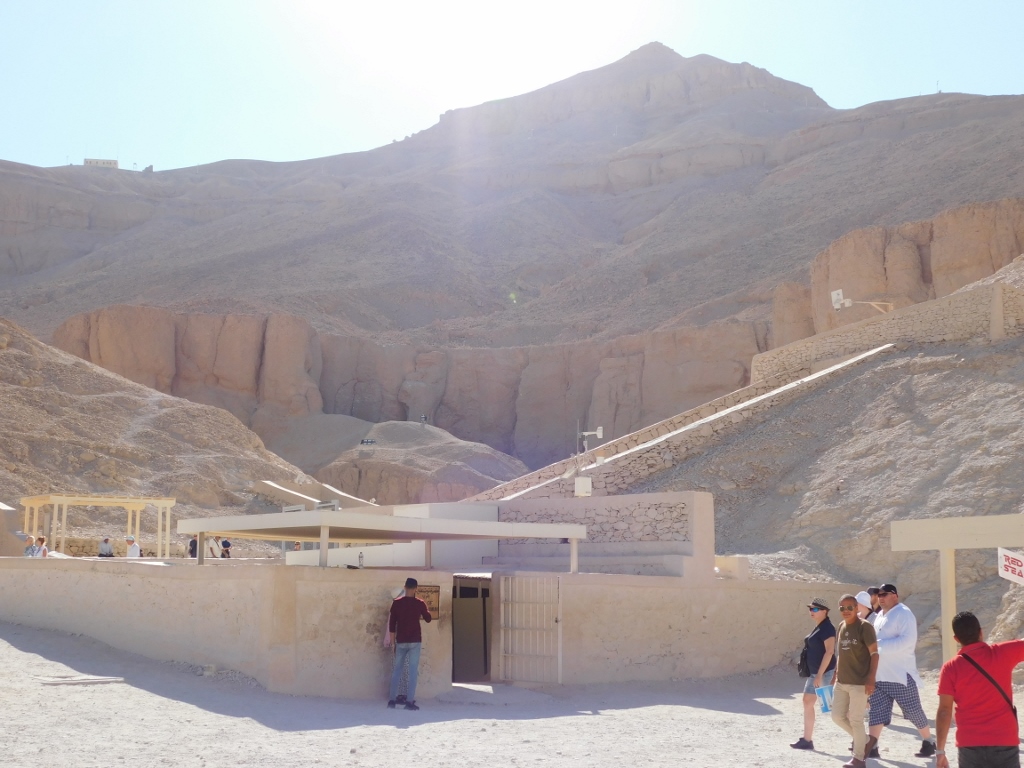 Enclosed access to the tomb of Tutankhamun
Enclosed access to the tomb of Tutankhamun
I have already mentioned before that Pharaoh Tutankhamun was a ruler from the 18th dynasty (1332-1323 BCE) who succeeded his father on the throne already at the age of 8 or 9. He also died very young (at the age of 18 or 19) and everything suggests that he died suddenly and so his mummified body was placed into a smaller tomb, as there was no time to build a big one. Since the tomb is positioned relatively low, its entrance was soon buried under the material excavated from the tombs that were built at higher elevations. And so, the young pharaoh and all of his treasure that was supposed to help him “get by” in the afterlife remained buried and forgotten for over 3000 years, until the tomb was open in 1923.
The tomb of Pharaoh Tutankhamun is indeed small and it consists of only a few smaller rooms that are easily reached by a small staircase. Since 2007, the mummy of Tutankhamun has been returned to the tomb and exhibited in a glass casket that has controlled micro-climate, so that the humidity and warmth of the visitors would not jeopardise this delicate artefact. I was escorted to the tomb by one of the guards and he placed his mobile phone with the lamp switched on so that it lit the pharaoh’s face. I moved waving him away and saying I was not interested, but he still left his mobile phone there, so I had no choice.
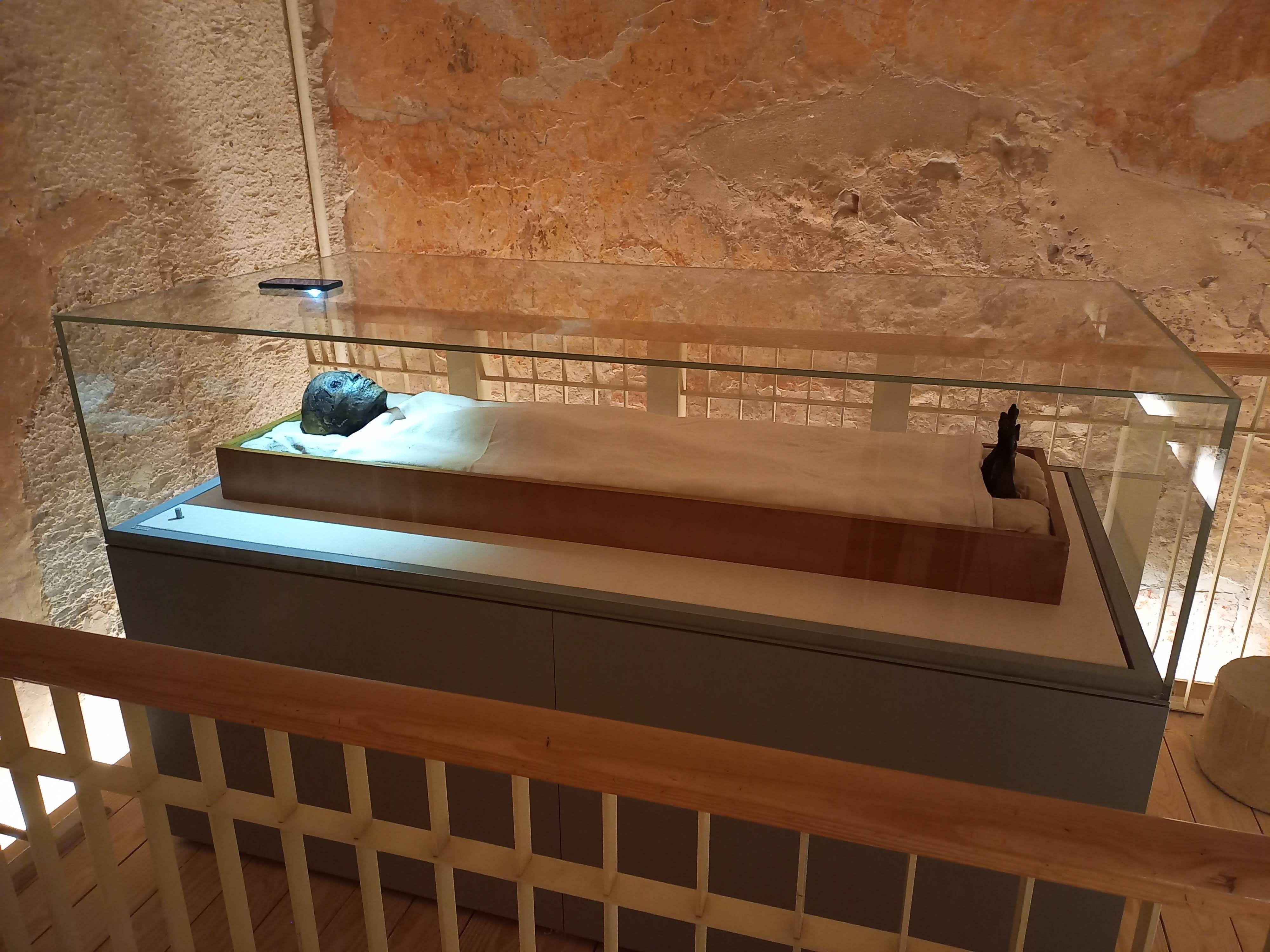 Tutankhamun’s mummy in the tomb
Tutankhamun’s mummy in the tomb
In the adjacent room there is a stone sarcophagus and this is where the pharaoh was originally laid to rest.
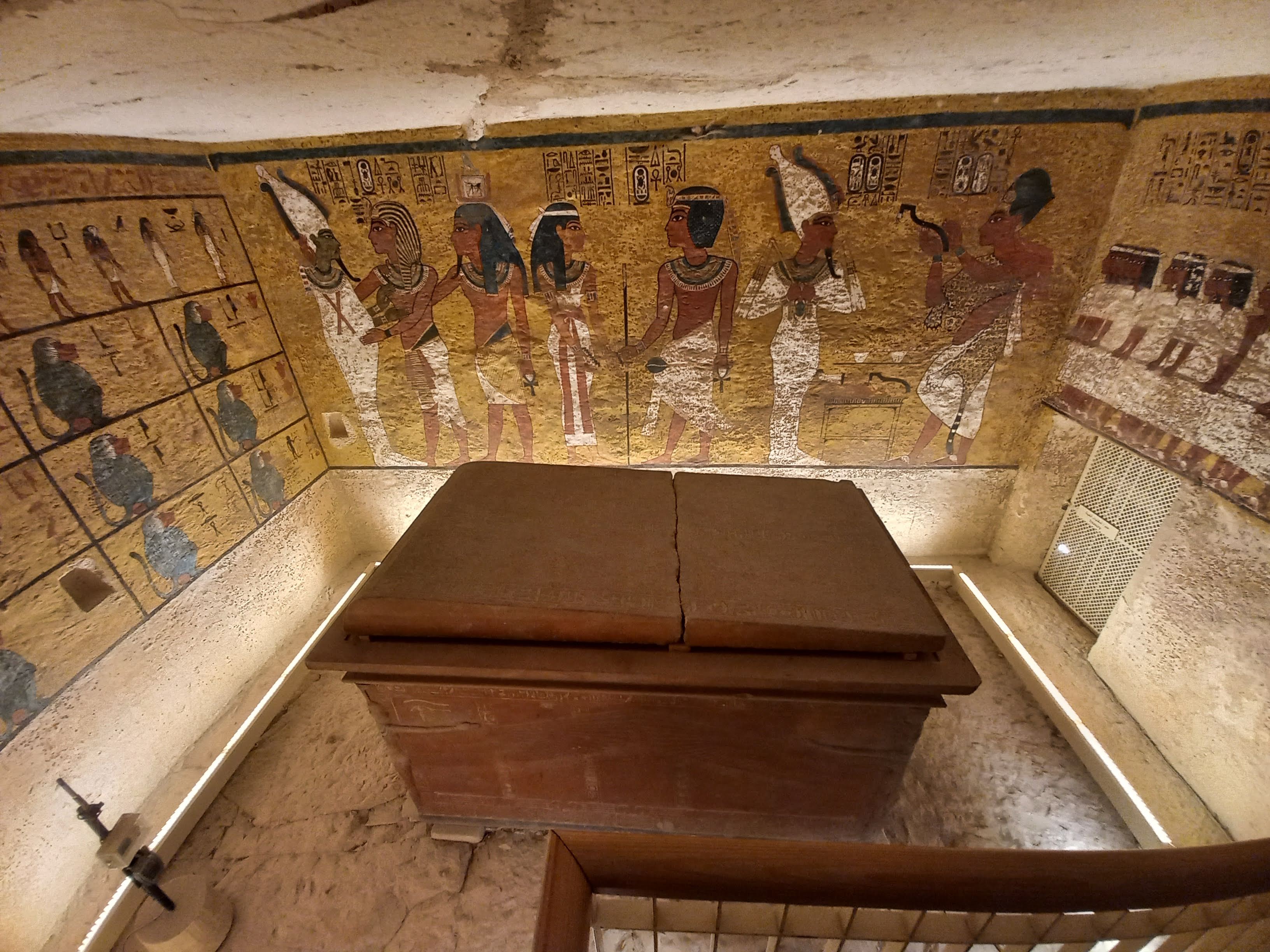 Main room in the tomb of Tutankhamun
Main room in the tomb of Tutankhamun
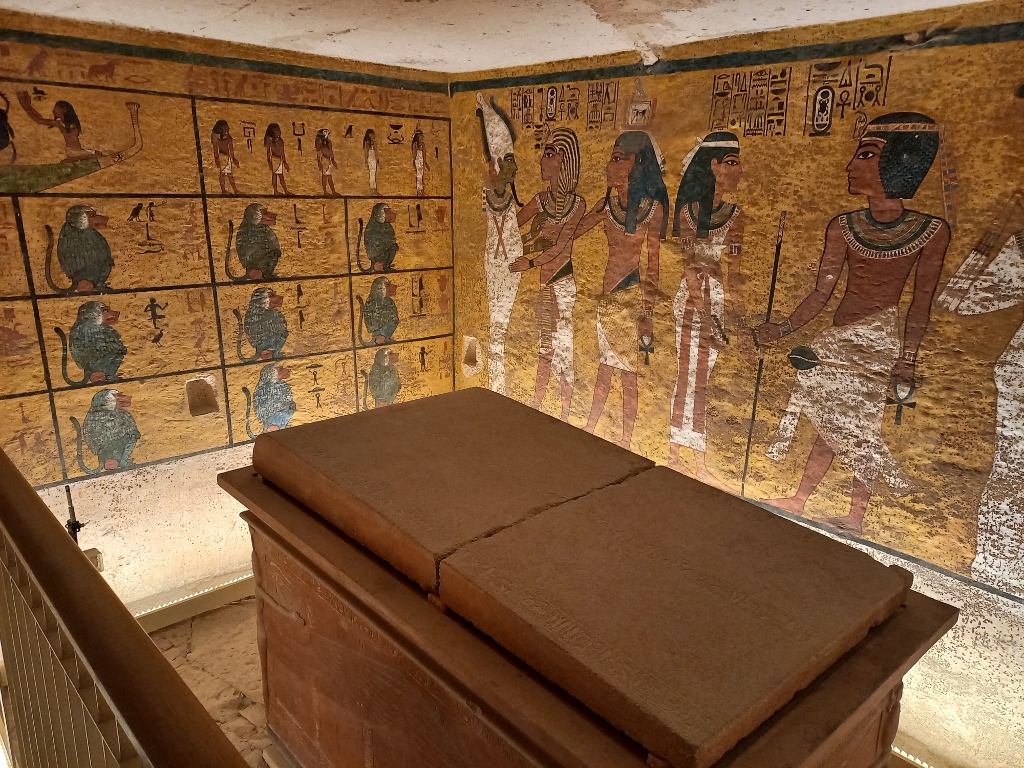 Main room in the tomb of Tutankhamun
Main room in the tomb of Tutankhamun
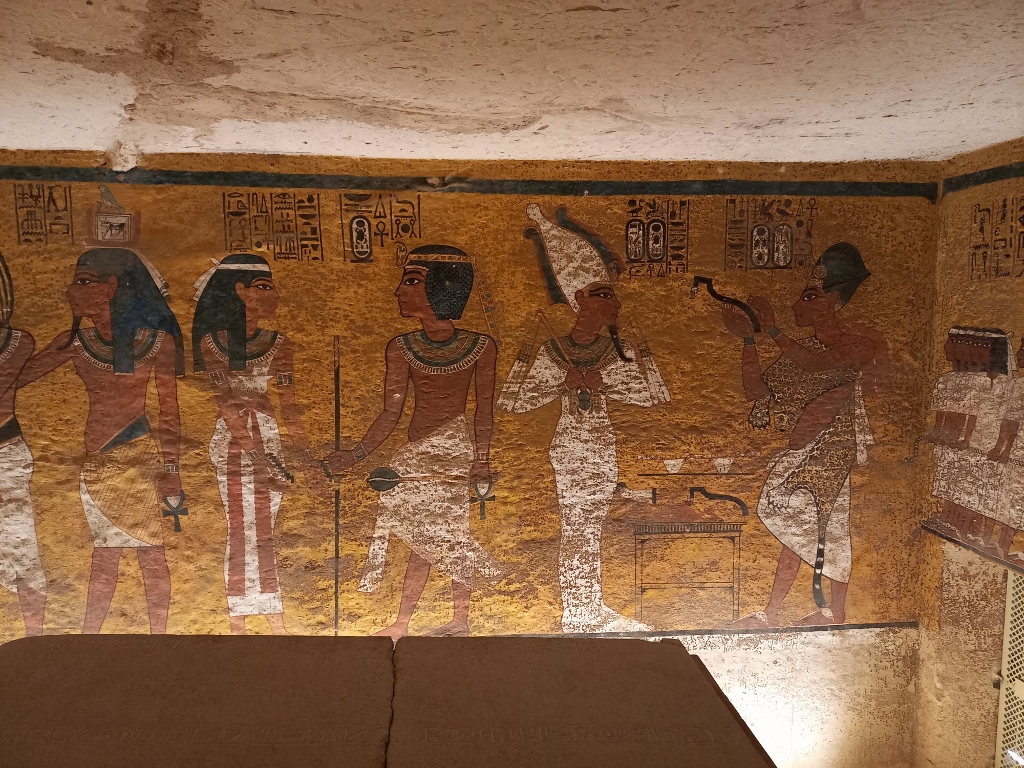 Main room in the tomb of Tutankhamun
Main room in the tomb of Tutankhamun
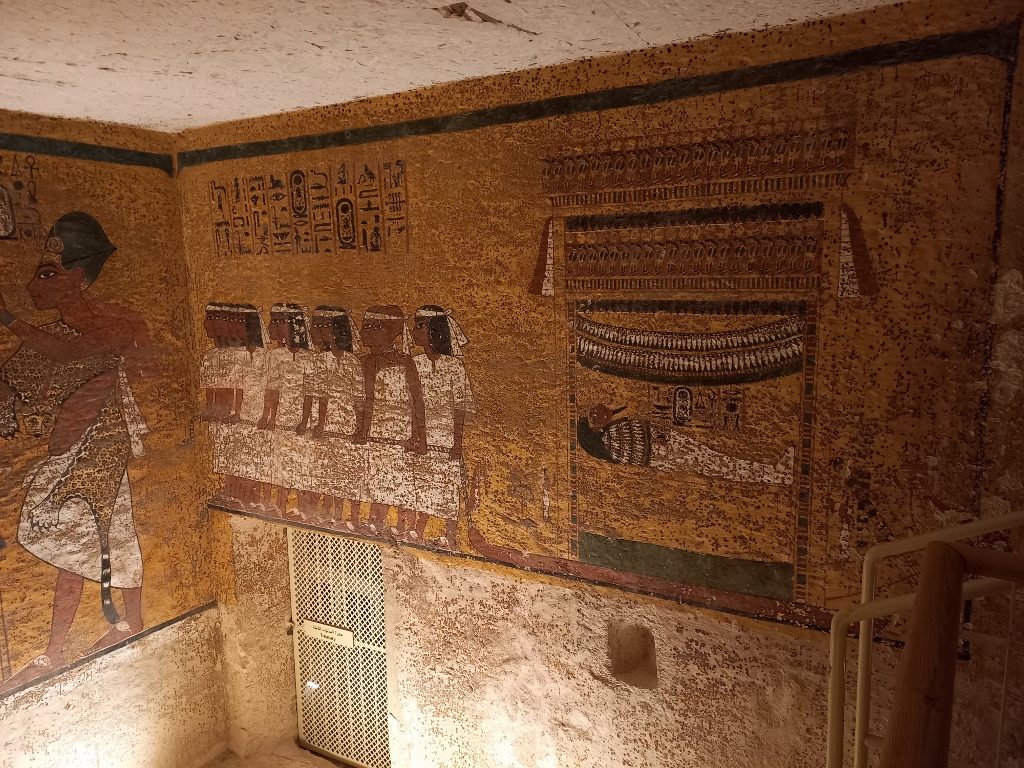 Main room in the tomb of Tutankhamun
Main room in the tomb of Tutankhamun
And here is also a short video to give you a “feel” of the interior of the tomb.
After this brief visit, I could also visit the other three that were covered by my entrance ticket.